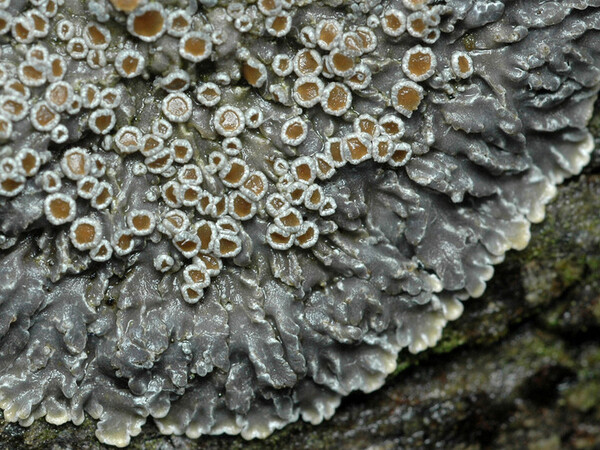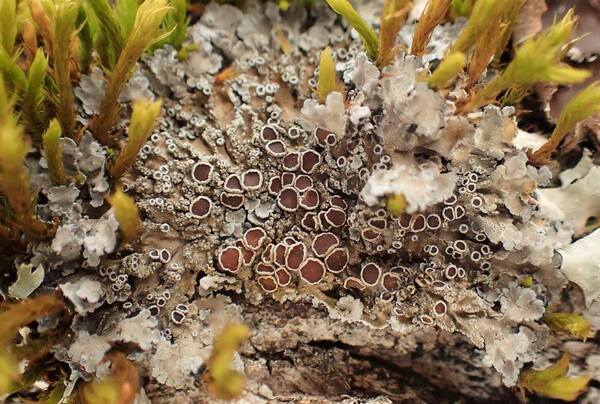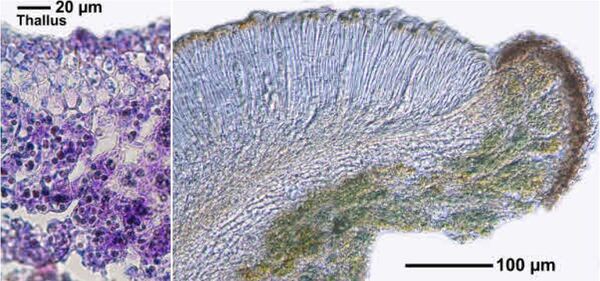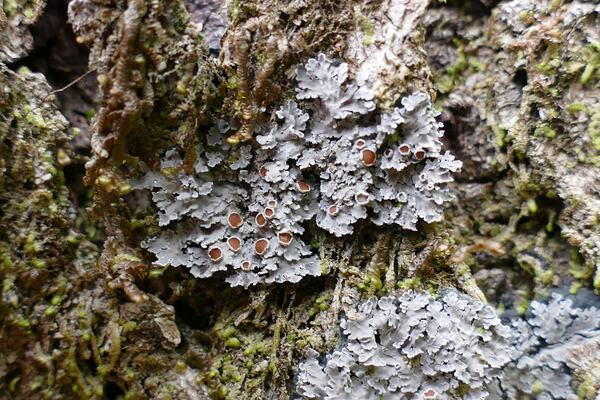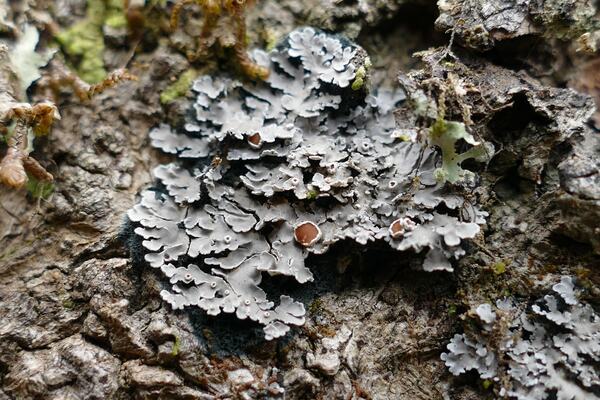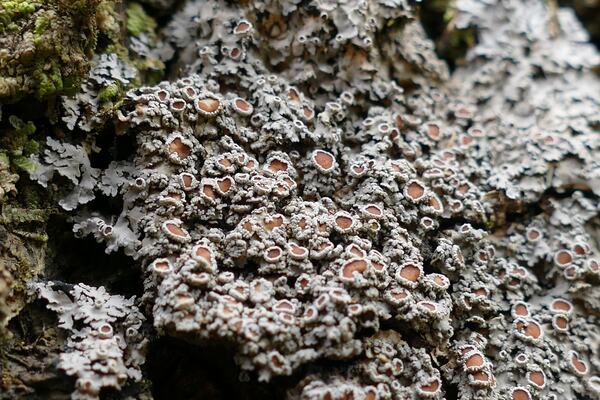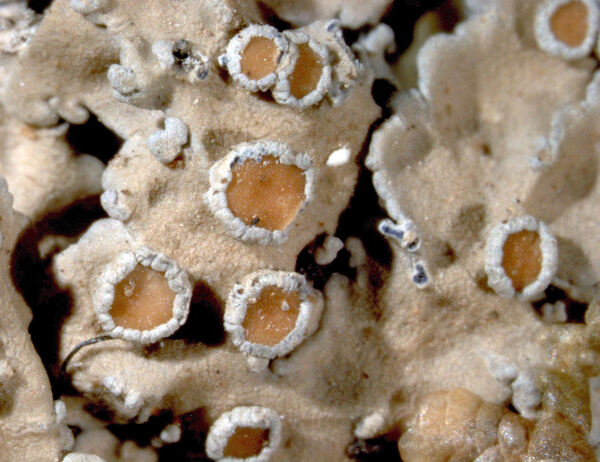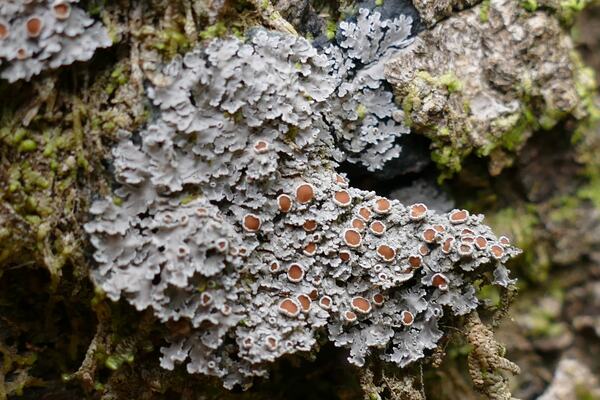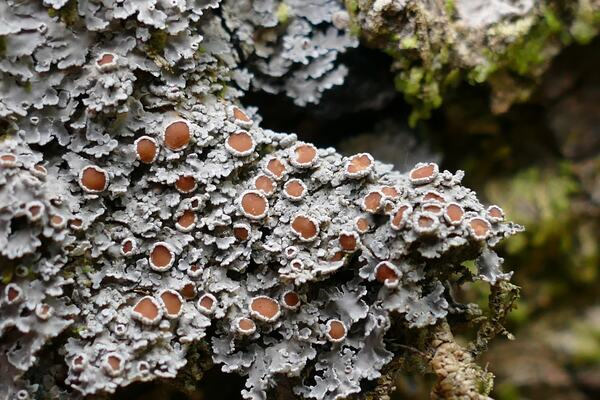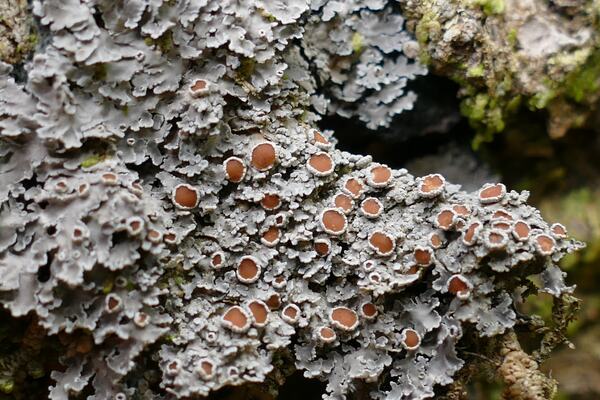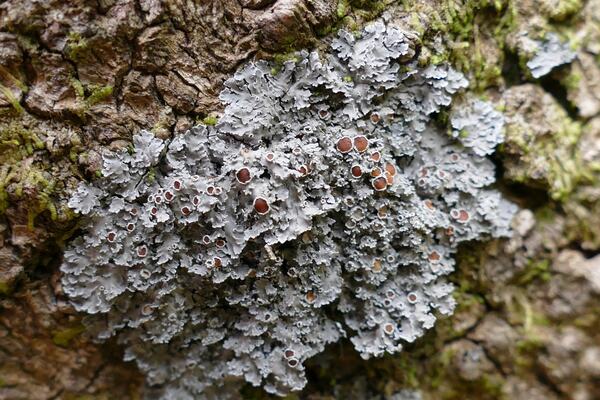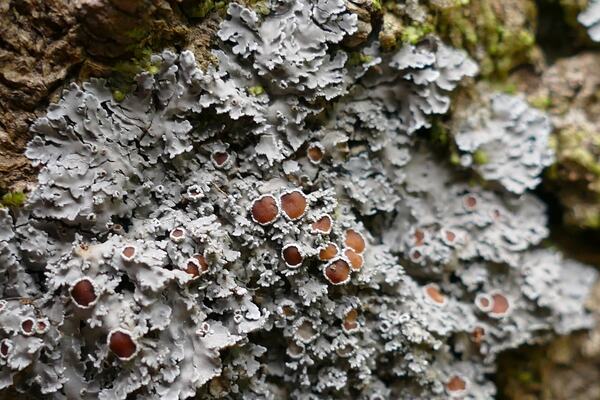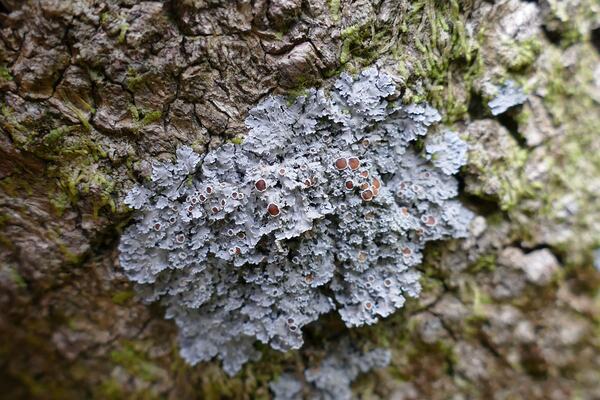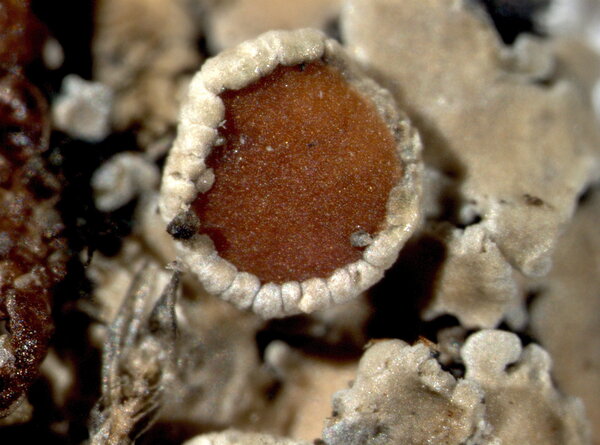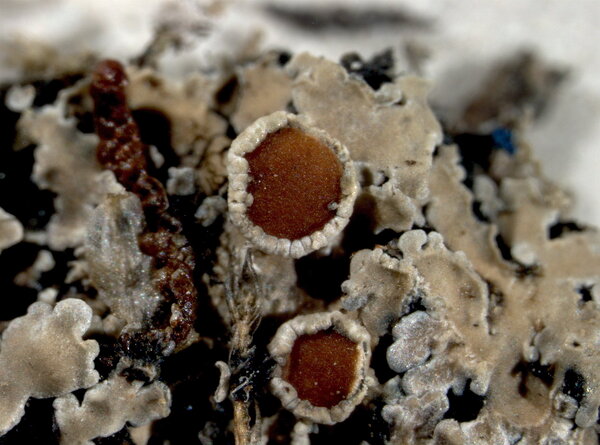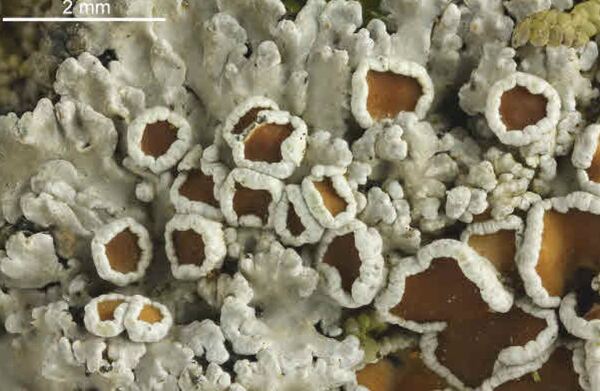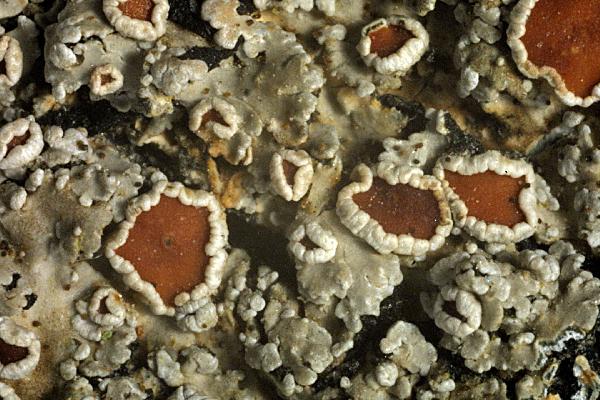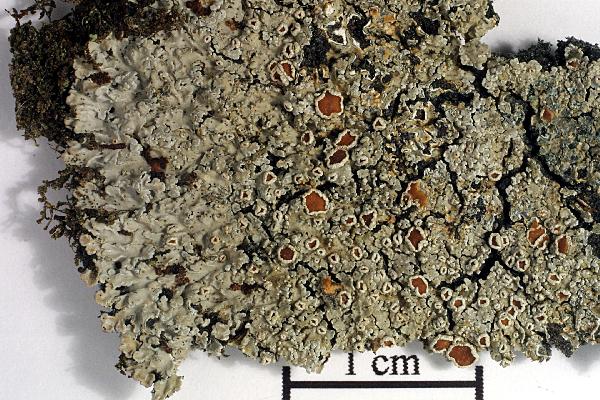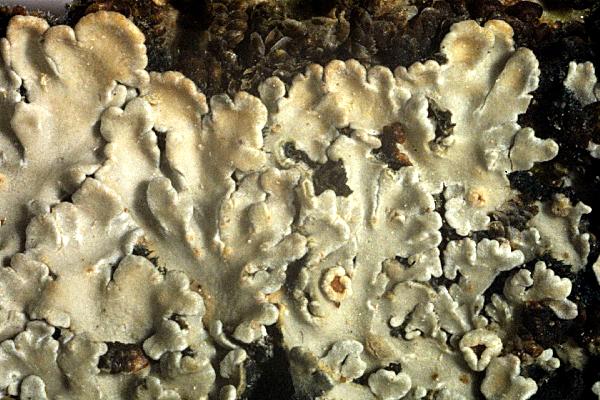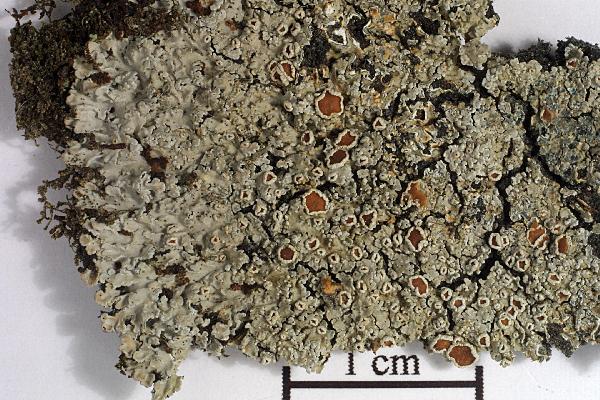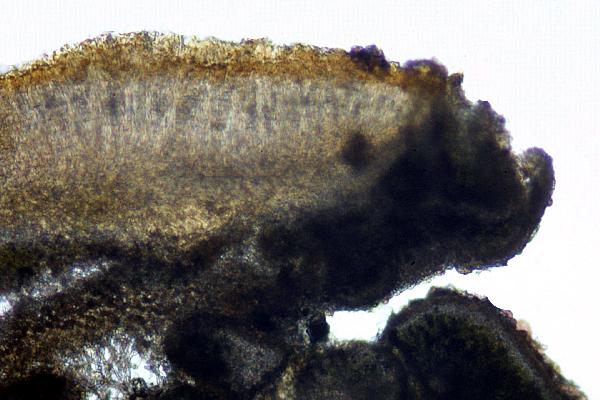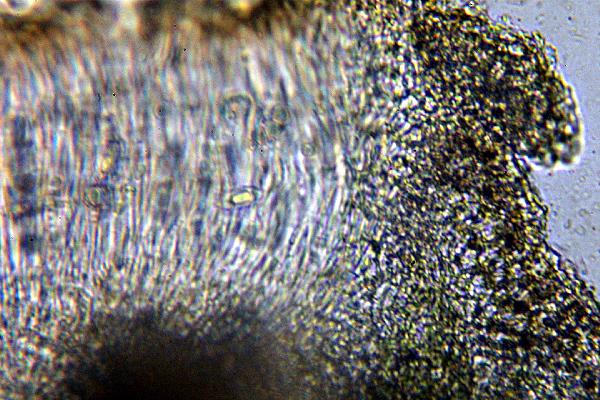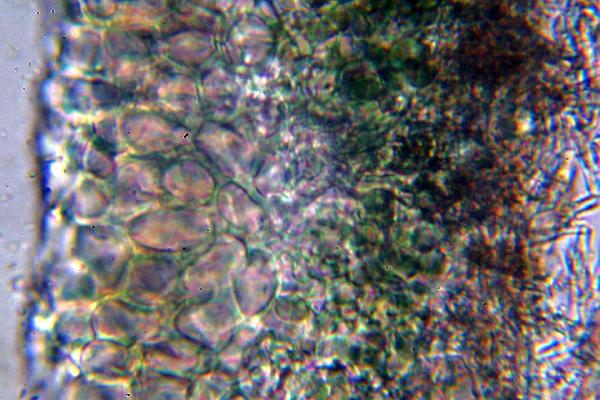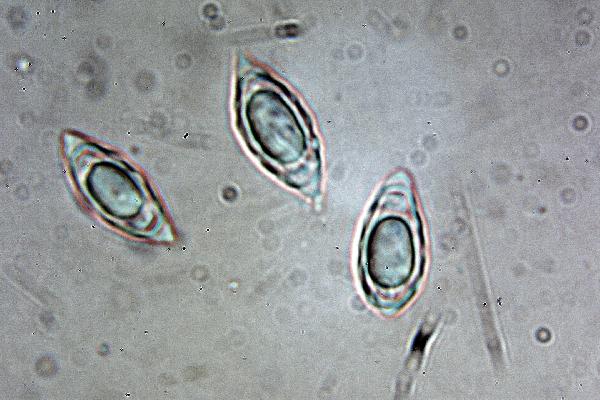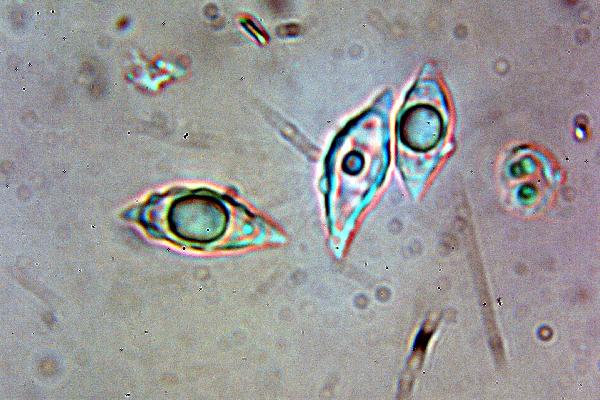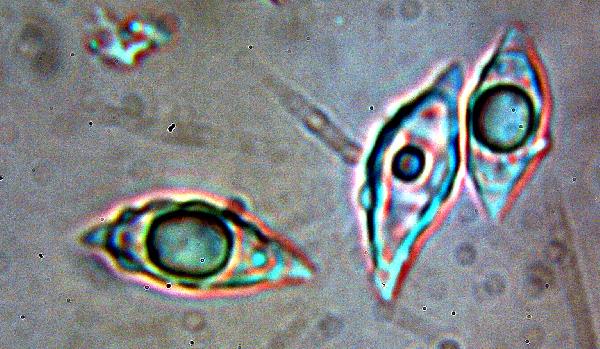Pannaria rubiginosa (Ach.) Bory
Dict. Class. Hist. Nat., 13: 20, 1828. Basionym: Lichen rubiginosus Ach. - Lichenogr. Suec. Prodr.: 99, 1799.
Synonyms: Lichen affinis Dicks.; Lichen squamosus Hoffm. nom. illegit.; Parmelia rubiginosa (Ach.) Ach.
Distribution: N - Frl (TSB 32724), Ven (Nascimbene & Marini 2010), TAA (Nascimbene & al. 2007b, Nimis & al. 2015), Lomb, VA, Emil (Fariselli & al. 2020), Lig. C - Tosc, Marc, Sar (Rizzi & al. 2011, Di Nuzzo & al. 2022). S - Camp (Ravera & al. 2021c), Bas (Potenza 2006, Potenza & Fascetti 2012), Cal (Puntillo 1996), Si (Merlo 2004).
Description: Thallus foliose, heteromerous, dorsiventral, forming 2-5(-8) mm wide, orbicular rosettes developing on a conspicuous hypothallus that sometimes extends as a blue-black zone around the thallus. Lobes mostly concave, (1-)3-4 mm wide, up to 8(-10) mm long, c. 200 µm thick, with raised, whitish, incised margins. Upper surface bluish grey to olive-brown, smooth to pruinose or sometimes scabrous at apices; lower surface white, with blue-black rhizohyphae. Upper cortex paraplectenchymatous, 40-50 µm thick; medulla white; lower cortex absent. Apothecia common, lecanorine, 0.5-1.5(-2) mm across, with a red-brown disc and a persistent, crenulate or minutely squamulose thalline margin. Exciple subparaplectenchymatous, 30-40 µm wide; epithecium brown; hymenium colourless, 110-150 µm high, partially I+ blue near the asci; paraphyses mostly simple, septate, the apical cells hardly swollen; hypothecium colourless to pale yellow. Asci 8-spored, clavate to subcylindrical, with a well developed, non-amyloid or very weakly amyloid tholus lacking internal structures, and an intensely amyloid, thin outer sheath. Ascospores 1-celled, hyaline, broadly ellipsoid, pointed at one or both ends, measuring 15-19 x 9-10 µm without the perisopore, 20-24 x 10-12 µm with the perispore. Photobiont cyanobacterial, (Nostoc), the cells not in chains. Spot tests: thallus K-, C-, KC-, P+ orange. Chemistry: pannarin.Note: a rare species of Lobarion-communities, restricted to rainy-humid areas, mostly on old mossy trunks in forests, and strongly declining, especially in Northern Italy. It is included in the Italian red list of epiphytic lichens as “Near-threatened” (Nascimbene & al. 2013c).
Growth form: Foliose, narrow lobed
Substrata: bark
Photobiont: cyanobacteria, filamentous (e.g. Nostoc, Scytonema)
Reproductive strategy: mainly sexual
Restricted to humid-warm, oceanic areas
Commonnes-rarity: (info)
Alpine belt: absent
Subalpine belt: absent
Oromediterranean belt: absent
Montane belt: absent
Submediterranean belt: extremely rare
Padanian area: absent
Humid submediterranean belt: extremely rare
Humid mediterranean belt: extremely rare
Dry mediterranean belt: absent

Predictive model
Herbarium samples
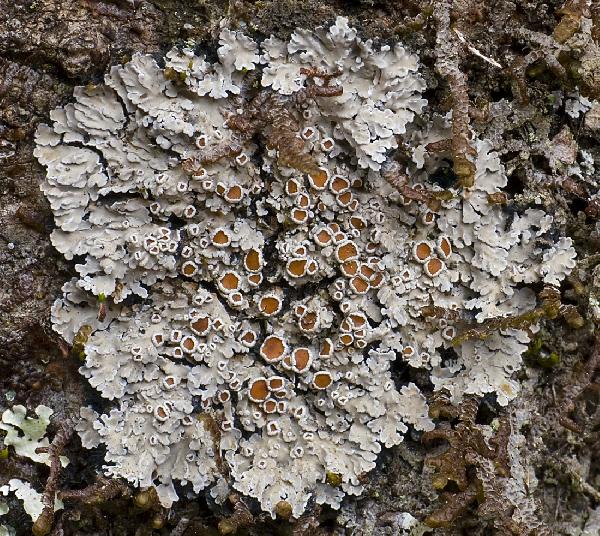
Ulrich Kirschbaum CC BY-SA 4.0 - Source: https://www.thm.de/lse/ulrich-kirschbaum/flechtenbilder
Portugal: Madeira.


Felix Schumm – CC BY-SA 4.0
Image from: F. Schumm (2008) - Flechten Madeiras, der Kanaren und Azoren. Beck, OHG - ISBN: 978-3-00-023700-3
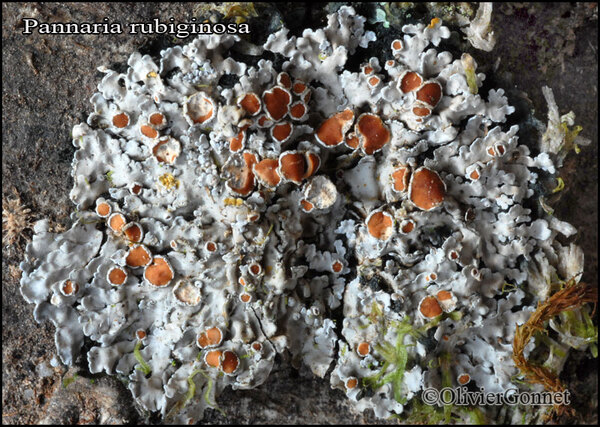
Courtesy Danièle et Olivier Gonnet - Source: https://www.afl-lichenologie.fr/Photos_AFL/Photos_AFL_P/Text_P/Pannaria_rubiginosa.htm
France, Gorges de la Rhue - Cantal
23/09/2015

Courtesy Danièle et Olivier Gonnet - Source: https://www.afl-lichenologie.fr/Photos_AFL/Photos_AFL_P/Text_P/Pannaria_rubiginosa.htm
France, Gorges de la Rhue - Cantal
23/09/2015

Courtesy Danièle et Olivier Gonnet - Source: https://www.afl-lichenologie.fr/Photos_AFL/Photos_AFL_P/Text_P/Pannaria_rubiginosa.htm
France, Gorges de la Rhue - Cantal
23/09/2015
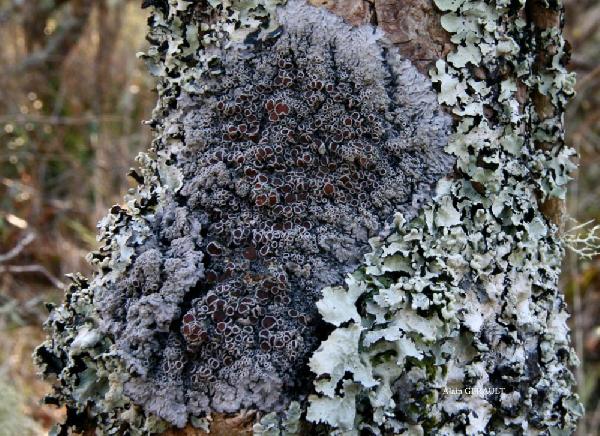
Alain Gerault - Source: http://www.lichensmaritimes.org/index.php?task=fiche&lichen=309&lang=en
France, Lesteven
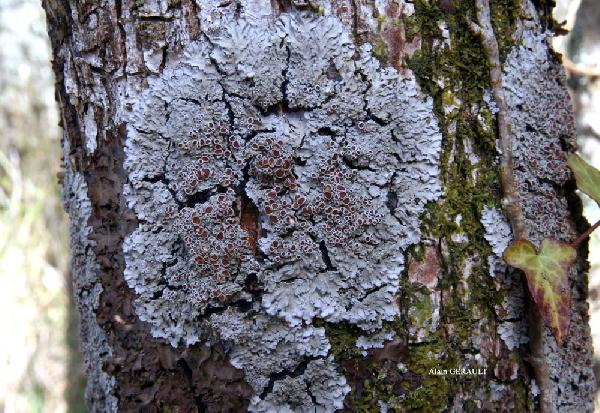
Alain Gerault - Source: http://www.lichensmaritimes.org/index.php?task=fiche&lichen=309&lang=en
France, Lesteven
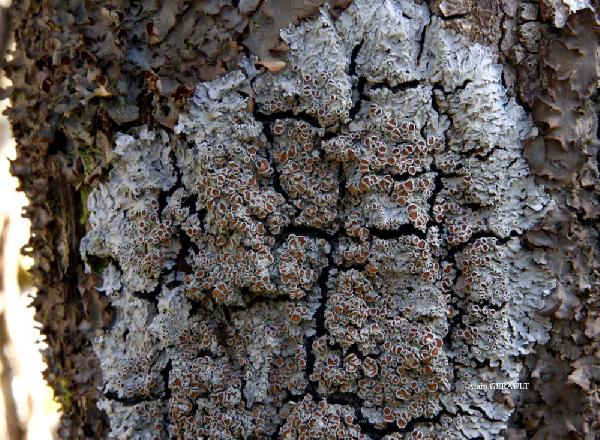
Alain Gerault - Source: http://www.lichensmaritimes.org/index.php?task=fiche&lichen=309&lang=en
France, Lesteven

Michel David - Source: http://www.lichensmaritimes.org/index.php?task=fiche&lichen=309&lang=en
France, Lesteven
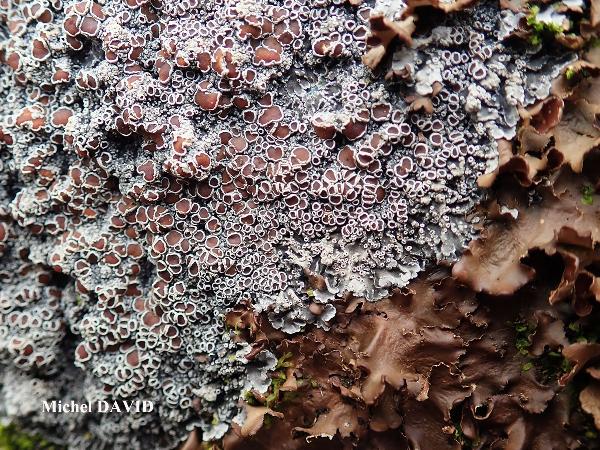
Michel David - Source: http://www.lichensmaritimes.org/index.php?task=fiche&lichen=309&lang=en
France, Lesteven
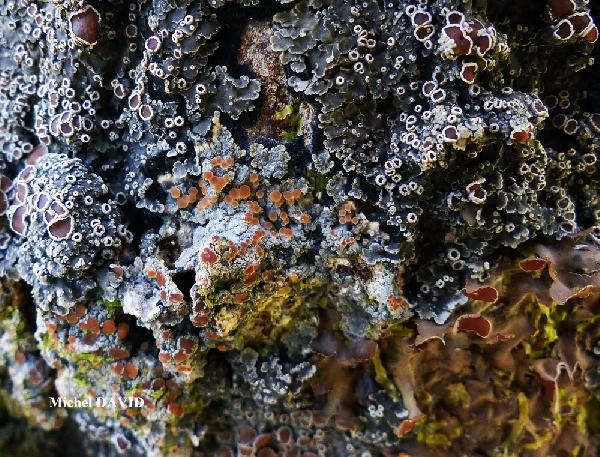
Michel David - Source: http://www.lichensmaritimes.org/index.php?task=fiche&lichen=309&lang=en
France, Crozon
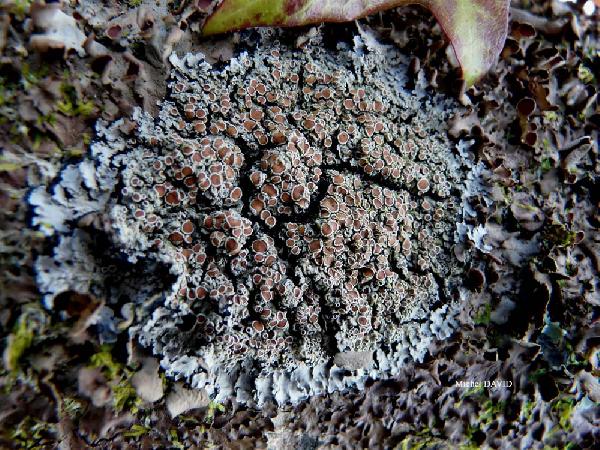
Michel David - Source: http://www.lichensmaritimes.org/index.php?task=fiche&lichen=309&lang=en
France, Lesteven
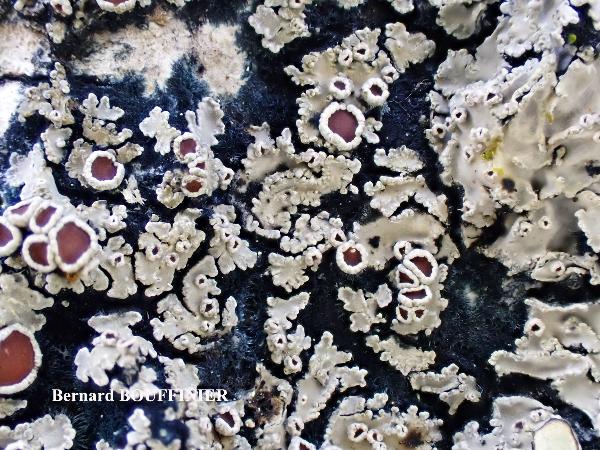
Michel David - Source: http://www.lichensmaritimes.org/index.php?task=fiche&lichen=309&lang=en
France, Lesteven
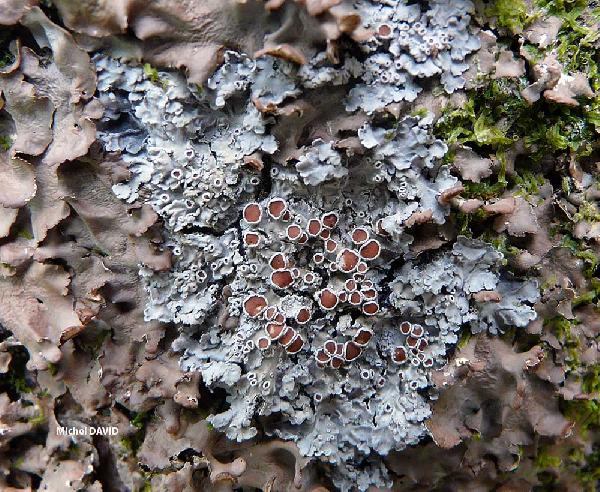
Michel David - Source: http://www.lichensmaritimes.org/index.php?task=fiche&lichen=309&lang=en
France, Crozon
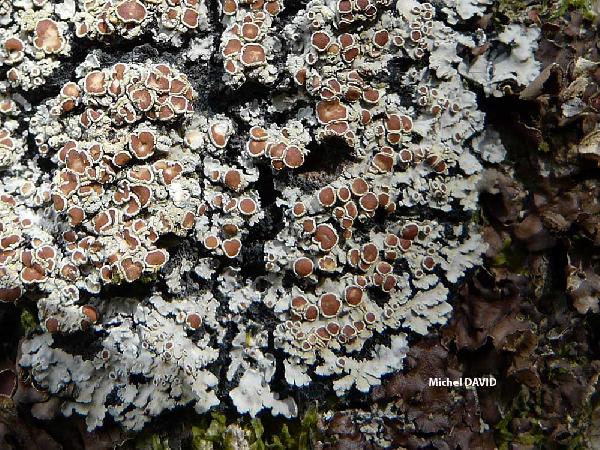
Michel David - Source: http://www.lichensmaritimes.org/index.php?task=fiche&lichen=309&lang=en
France, Crozon

Michel David - Source: http://www.lichensmaritimes.org/index.php?task=fiche&lichen=309&lang=en
France, Crozon
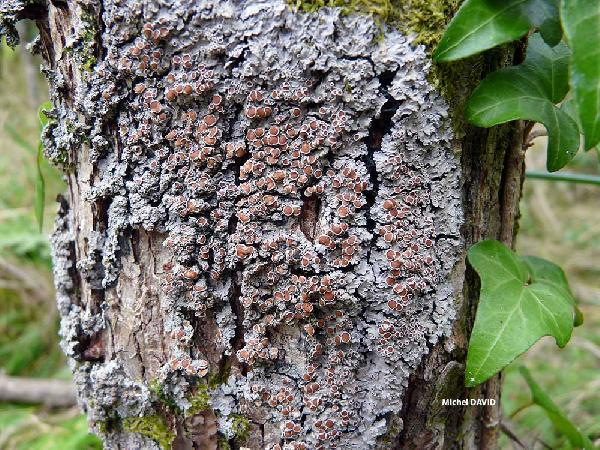
Michel David - Source: http://www.lichensmaritimes.org/index.php?task=fiche&lichen=309&lang=en
France, Crozon
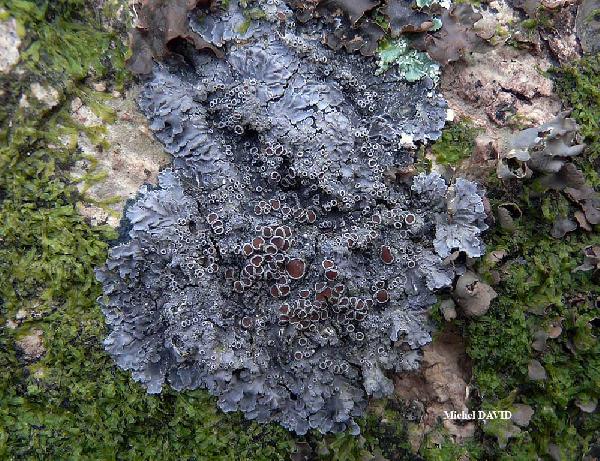
Michel David - Source: http://www.lichensmaritimes.org/index.php?task=fiche&lichen=309&lang=en
France, Crozon
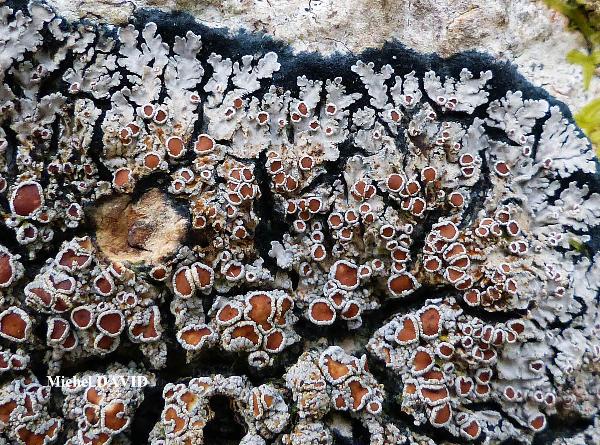
Michel David - Source: http://www.lichensmaritimes.org/index.php?task=fiche&lichen=309&lang=en
France, Crozon
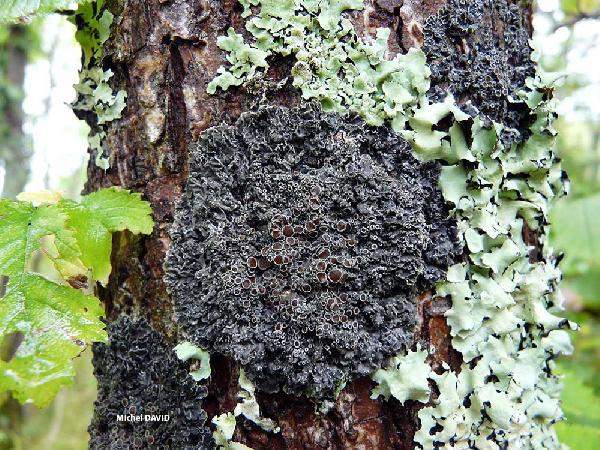
Michel David - Source: http://www.lichensmaritimes.org/index.php?task=fiche&lichen=309&lang=en
France, Crozon
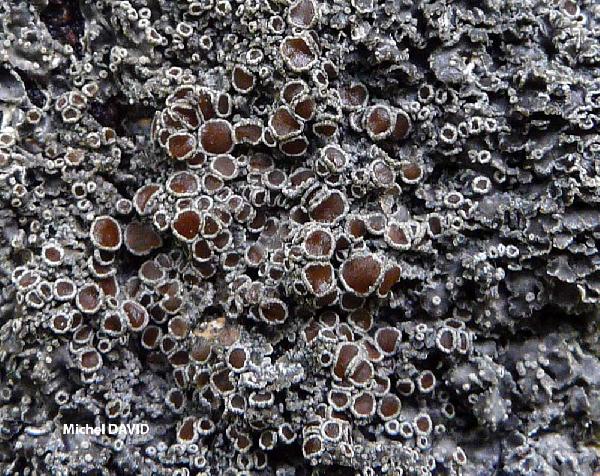
Michel David - Source: http://www.lichensmaritimes.org/index.php?task=fiche&lichen=309&lang=en
France, Crozon
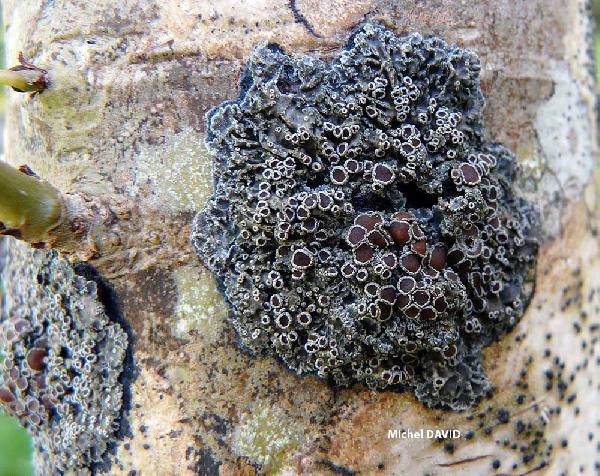
Michel David - Source: http://www.lichensmaritimes.org/index.php?task=fiche&lichen=309&lang=en
France, Crozon
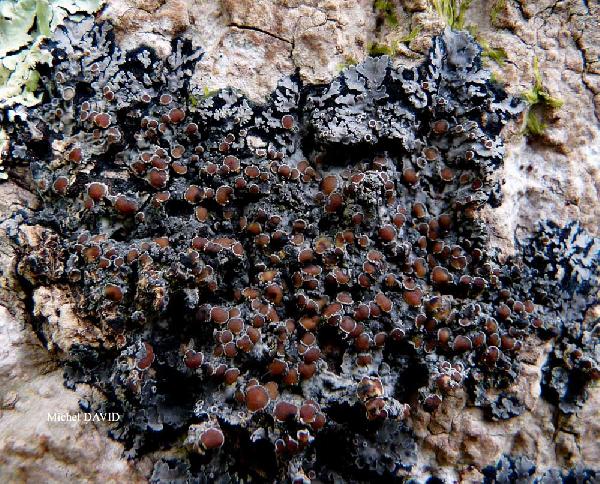
Michel David - Source: http://www.lichensmaritimes.org/index.php?task=fiche&lichen=309&lang=en
France, Lesteven
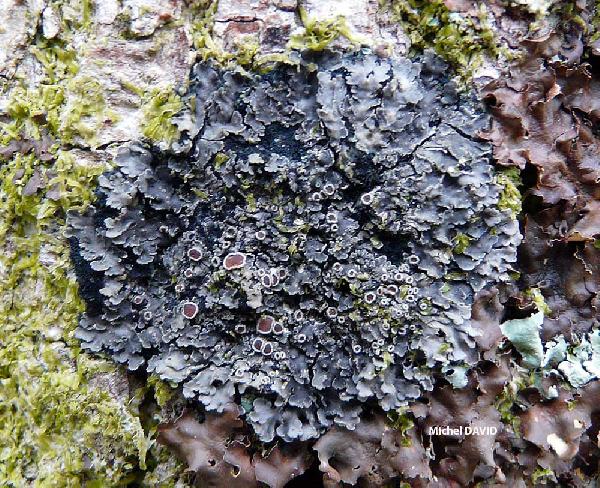
Michel David - Source: http://www.lichensmaritimes.org/index.php?task=fiche&lichen=309&lang=en
France, Lesteven

Michel David - Source: http://www.lichensmaritimes.org/index.php?task=fiche&lichen=309&lang=en
France, Lesteven


P.L. Nimis; Owner: Department of Life Sciences, University of Trieste
Herbarium: TSB (17118)
2001/11/28
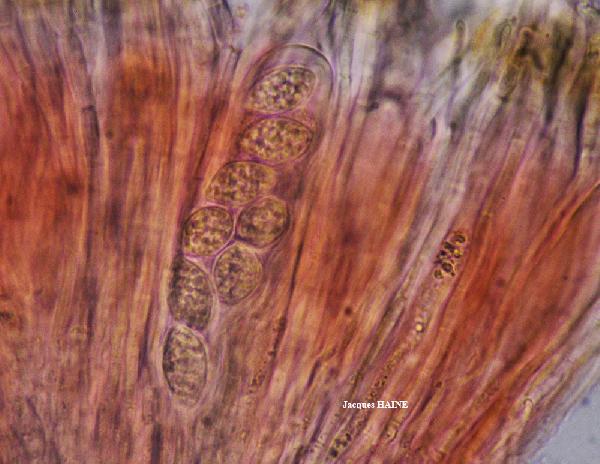
Jacques Haine - Source: http://www.lichensmaritimes.org/index.php?task=fiche&lichen=309&lang=en
France, Crozon
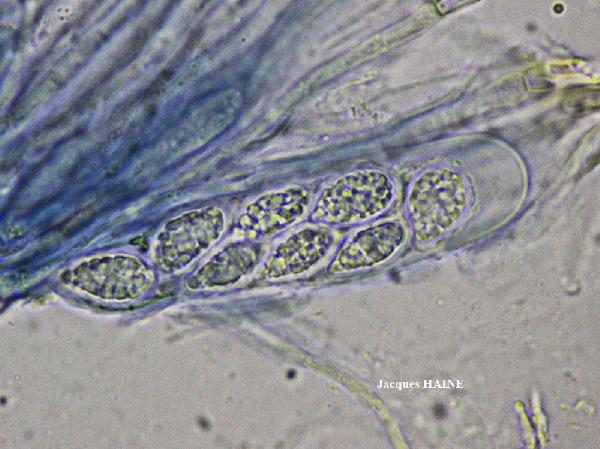
Jacques Haine - Source: http://www.lichensmaritimes.org/index.php?task=fiche&lichen=309&lang=en
France, Crozon
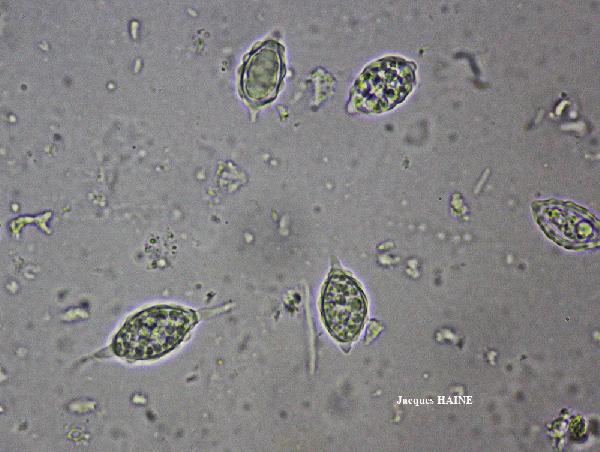
Jacques Haine - Source: http://www.lichensmaritimes.org/index.php?task=fiche&lichen=309&lang=en
France, Crozon
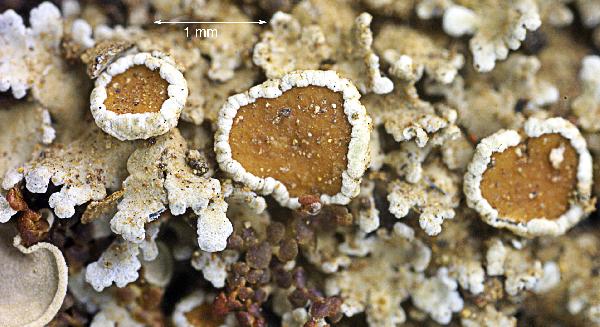

Felix Schumm - CC BY-SA 4.0
[2464], Spanien, Kanarische Inseln, Teneriffa, Lorbeer-Erika-Wald bei
Las Mercedes, ca. 950 m. Leg. F. Schumm, 03.01.1976, det. F.
Schumm, 2007. - Sporen 1-zellig, mit welligem Epispor, 15,3 x 8,2 μm
(mit Epispor: 17,9 x 12 μm); Hymenium J+ dauerhaft blau, Asci ohne
besondere Apicalstruktur; Th. P+ orangerot.


Felix Schumm - CC BY-SA 4.0
[2464], Spanien, Kanarische Inseln, Teneriffa, Lorbeer-Erika-Wald bei
Las Mercedes, ca. 950 m. Leg. F. Schumm, 03.01.1976, det. F.
Schumm, 2007. - Sporen 1-zellig, mit welligem Epispor, 15,3 x 8,2 μm
(mit Epispor: 17,9 x 12 μm); Hymenium J+ dauerhaft blau, Asci ohne
besondere Apicalstruktur; Th. P+ orangerot.
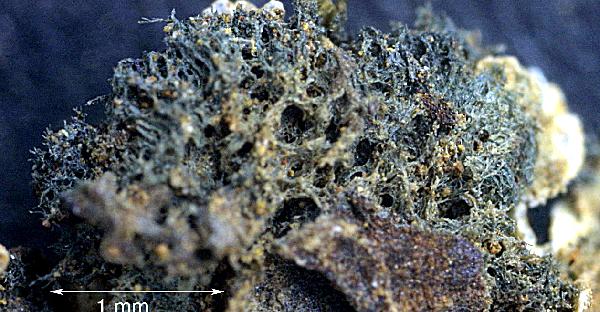

Felix Schumm - CC BY-SA 4.0
[2464], Spanien, Kanarische Inseln, Teneriffa, Lorbeer-Erika-Wald bei
Las Mercedes, ca. 950 m. Leg. F. Schumm, 03.01.1976, det. F.
Schumm, 2007. - Sporen 1-zellig, mit welligem Epispor, 15,3 x 8,2 μm
(mit Epispor: 17,9 x 12 μm); Hymenium J+ dauerhaft blau, Asci ohne
besondere Apicalstruktur; Th. P+ orangerot.
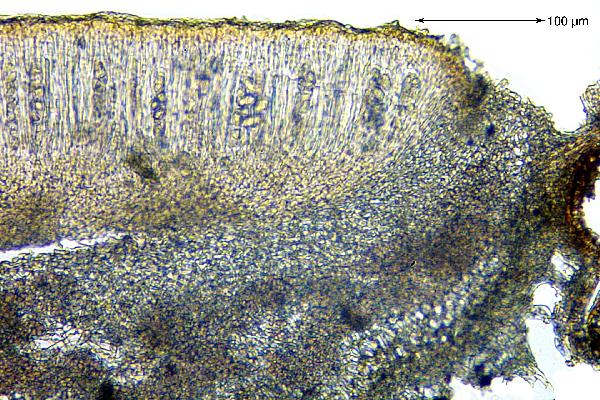

Felix Schumm - CC BY-SA 4.0
[2464], Spanien, Kanarische Inseln, Teneriffa, Lorbeer-Erika-Wald bei
Las Mercedes, ca. 950 m. Leg. F. Schumm, 03.01.1976, det. F.
Schumm, 2007. - Sporen 1-zellig, mit welligem Epispor, 15,3 x 8,2 μm
(mit Epispor: 17,9 x 12 μm); Hymenium J+ dauerhaft blau, Asci ohne
besondere Apicalstruktur; Th. P+ orangerot.
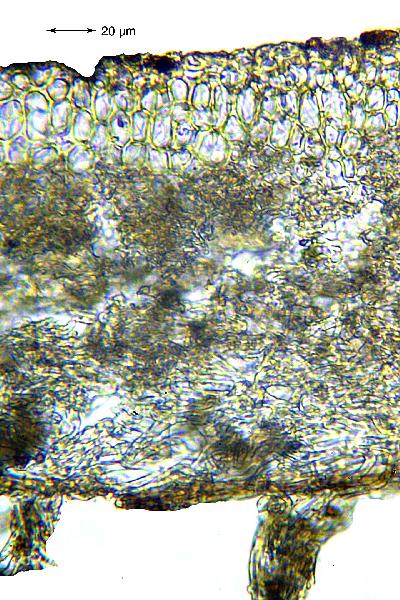

Felix Schumm - CC BY-SA 4.0
[2464], Spanien, Kanarische Inseln, Teneriffa, Lorbeer-Erika-Wald bei
Las Mercedes, ca. 950 m. Leg. F. Schumm, 03.01.1976, det. F.
Schumm, 2007. - Sporen 1-zellig, mit welligem Epispor, 15,3 x 8,2 μm
(mit Epispor: 17,9 x 12 μm); Hymenium J+ dauerhaft blau, Asci ohne
besondere Apicalstruktur; Th. P+ orangerot.


Felix Schumm - CC BY-SA 4.0
[2464], Spanien, Kanarische Inseln, Teneriffa, Lorbeer-Erika-Wald bei
Las Mercedes, ca. 950 m. Leg. F. Schumm, 03.01.1976, det. F.
Schumm, 2007. - Sporen 1-zellig, mit welligem Epispor, 15,3 x 8,2 μm
(mit Epispor: 17,9 x 12 μm); Hymenium J+ dauerhaft blau, Asci ohne
besondere Apicalstruktur; Th. P+ orangerot.
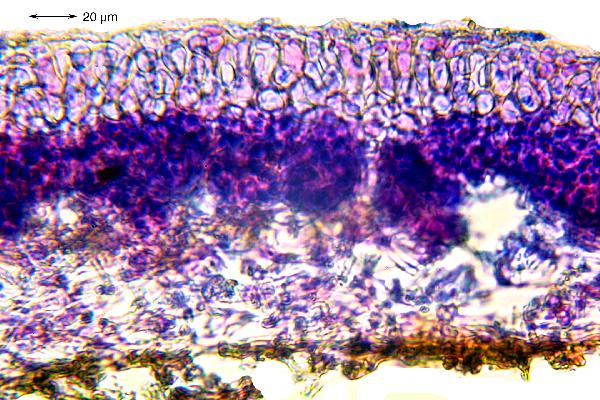

Felix Schumm - CC BY-SA 4.0
[2464], Spanien, Kanarische Inseln, Teneriffa, Lorbeer-Erika-Wald bei
Las Mercedes, ca. 950 m. Leg. F. Schumm, 03.01.1976, det. F.
Schumm, 2007. - Sporen 1-zellig, mit welligem Epispor, 15,3 x 8,2 μm
(mit Epispor: 17,9 x 12 μm); Hymenium J+ dauerhaft blau, Asci ohne
besondere Apicalstruktur; Th. P+ orangerot.
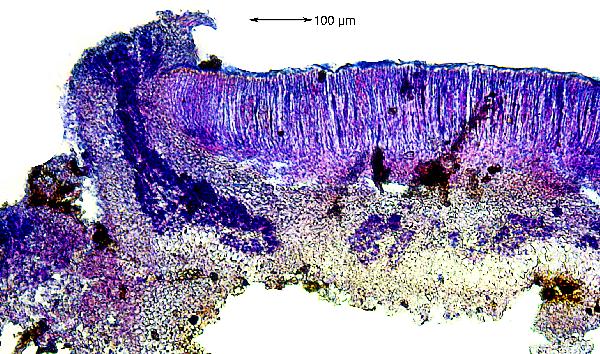

Felix Schumm - CC BY-SA 4.0
[2464], Spanien, Kanarische Inseln, Teneriffa, Lorbeer-Erika-Wald bei
Las Mercedes, ca. 950 m. Leg. F. Schumm, 03.01.1976, det. F.
Schumm, 2007. - Sporen 1-zellig, mit welligem Epispor, 15,3 x 8,2 μm
(mit Epispor: 17,9 x 12 μm); Hymenium J+ dauerhaft blau, Asci ohne
besondere Apicalstruktur; Th. P+ orangerot.
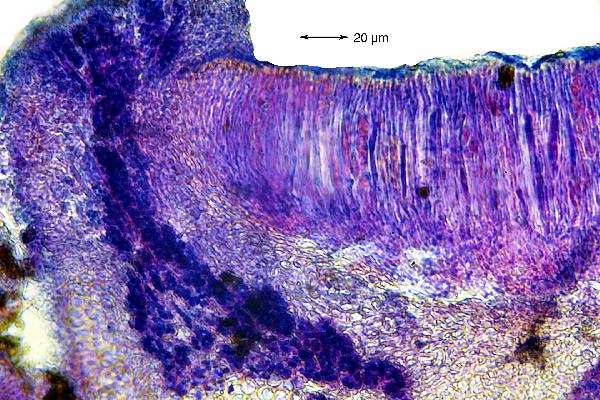

Felix Schumm - CC BY-SA 4.0
[2464], Spanien, Kanarische Inseln, Teneriffa, Lorbeer-Erika-Wald bei
Las Mercedes, ca. 950 m. Leg. F. Schumm, 03.01.1976, det. F.
Schumm, 2007. - Sporen 1-zellig, mit welligem Epispor, 15,3 x 8,2 μm
(mit Epispor: 17,9 x 12 μm); Hymenium J+ dauerhaft blau, Asci ohne
besondere Apicalstruktur; Th. P+ orangerot.
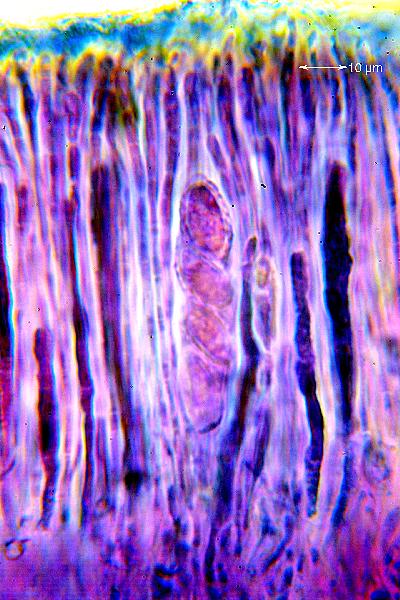

Felix Schumm - CC BY-SA 4.0
[2464], Spanien, Kanarische Inseln, Teneriffa, Lorbeer-Erika-Wald bei
Las Mercedes, ca. 950 m. Leg. F. Schumm, 03.01.1976, det. F.
Schumm, 2007. - Sporen 1-zellig, mit welligem Epispor, 15,3 x 8,2 μm
(mit Epispor: 17,9 x 12 μm); Hymenium J+ dauerhaft blau, Asci ohne
besondere Apicalstruktur; Th. P+ orangerot.


Felix Schumm - CC BY-SA 4.0
[2464], Spanien, Kanarische Inseln, Teneriffa, Lorbeer-Erika-Wald bei
Las Mercedes, ca. 950 m. Leg. F. Schumm, 03.01.1976, det. F.
Schumm, 2007. - Sporen 1-zellig, mit welligem Epispor, 15,3 x 8,2 μm
(mit Epispor: 17,9 x 12 μm); Hymenium J+ dauerhaft blau, Asci ohne
besondere Apicalstruktur; Th. P+ orangerot.
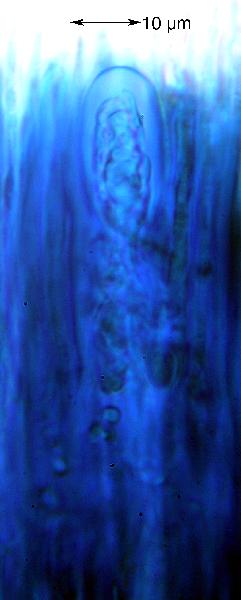

Felix Schumm - CC BY-SA 4.0
[2464], Spanien, Kanarische Inseln, Teneriffa, Lorbeer-Erika-Wald bei
Las Mercedes, ca. 950 m. Leg. F. Schumm, 03.01.1976, det. F.
Schumm, 2007. - Sporen 1-zellig, mit welligem Epispor, 15,3 x 8,2 μm
(mit Epispor: 17,9 x 12 μm); Hymenium J+ dauerhaft blau, Asci ohne
besondere Apicalstruktur; Th. P+ orangerot.
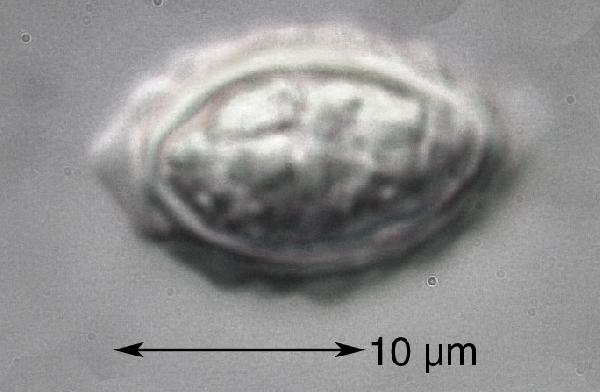

Felix Schumm - CC BY-SA 4.0
[2464], Spanien, Kanarische Inseln, Teneriffa, Lorbeer-Erika-Wald bei
Las Mercedes, ca. 950 m. Leg. F. Schumm, 03.01.1976, det. F.
Schumm, 2007. - Sporen 1-zellig, mit welligem Epispor, 15,3 x 8,2 μm
(mit Epispor: 17,9 x 12 μm); Hymenium J+ dauerhaft blau, Asci ohne
besondere Apicalstruktur; Th. P+ orangerot.
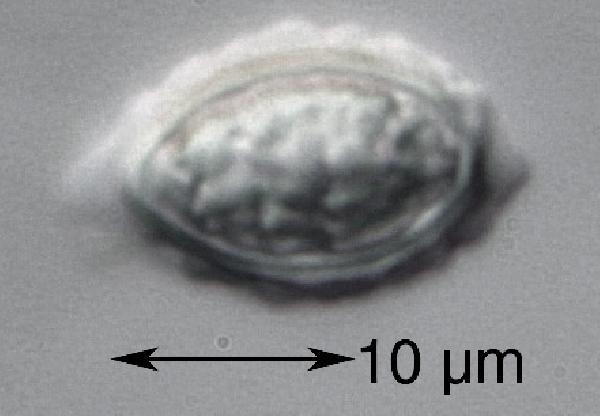

Felix Schumm - CC BY-SA 4.0
[2464], Spanien, Kanarische Inseln, Teneriffa, Lorbeer-Erika-Wald bei
Las Mercedes, ca. 950 m. Leg. F. Schumm, 03.01.1976, det. F.
Schumm, 2007. - Sporen 1-zellig, mit welligem Epispor, 15,3 x 8,2 μm
(mit Epispor: 17,9 x 12 μm); Hymenium J+ dauerhaft blau, Asci ohne
besondere Apicalstruktur; Th. P+ orangerot.


Felix Schumm - CC BY-SA 4.0
[12106], Spanien, Kanarische Inseln, La Palma: Cumbre Nueva,
Kammweg zwischen El Pilar und Reventón, Lorbeerwald beim Abstieg
zur Fuente de Guairin, epiphytisch, 1320 m. Leg. A. Schäfer-Verwimp
& Verwimp, 23. März 2005 (Nr. 24612), det. F. Schumm, 11.9.2005l -
Mark P+ orange (Pannarin); Sporen 1-zellig, zu 8, hyalin, mit warzigem
Epispor, ca. 16,4 x 8,7 μm.
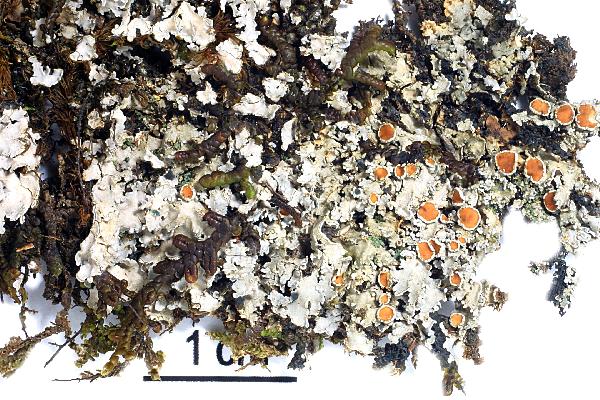

Felix Schumm - CC BY-SA 4.0
[12106], Spanien, Kanarische Inseln, La Palma: Cumbre Nueva,
Kammweg zwischen El Pilar und Reventón, Lorbeerwald beim Abstieg
zur Fuente de Guairin, epiphytisch, 1320 m. Leg. A. Schäfer-Verwimp
& Verwimp, 23. März 2005 (Nr. 24612), det. F. Schumm, 11.9.2005l -
Mark P+ orange (Pannarin); Sporen 1-zellig, zu 8, hyalin, mit warzigem
Epispor, ca. 16,4 x 8,7 μm.


Felix Schumm - CC BY-SA 4.0
[12106], Spanien, Kanarische Inseln, La Palma: Cumbre Nueva,
Kammweg zwischen El Pilar und Reventón, Lorbeerwald beim Abstieg
zur Fuente de Guairin, epiphytisch, 1320 m. Leg. A. Schäfer-Verwimp
& Verwimp, 23. März 2005 (Nr. 24612), det. F. Schumm, 11.9.2005l -
Mark P+ orange (Pannarin); Sporen 1-zellig, zu 8, hyalin, mit warzigem
Epispor, ca. 16,4 x 8,7 μm.
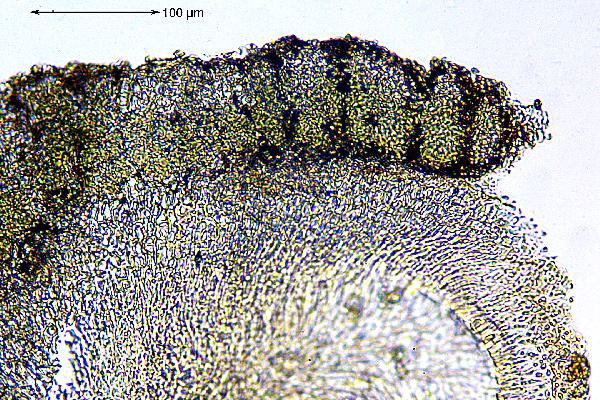

Felix Schumm - CC BY-SA 4.0
[12106], Spanien, Kanarische Inseln, La Palma: Cumbre Nueva,
Kammweg zwischen El Pilar und Reventón, Lorbeerwald beim Abstieg
zur Fuente de Guairin, epiphytisch, 1320 m. Leg. A. Schäfer-Verwimp
& Verwimp, 23. März 2005 (Nr. 24612), det. F. Schumm, 11.9.2005l -
Mark P+ orange (Pannarin); Sporen 1-zellig, zu 8, hyalin, mit warzigem
Epispor, ca. 16,4 x 8,7 μm.


Felix Schumm - CC BY-SA 4.0
[12106], Spanien, Kanarische Inseln, La Palma: Cumbre Nueva,
Kammweg zwischen El Pilar und Reventón, Lorbeerwald beim Abstieg
zur Fuente de Guairin, epiphytisch, 1320 m. Leg. A. Schäfer-Verwimp
& Verwimp, 23. März 2005 (Nr. 24612), det. F. Schumm, 11.9.2005l -
Mark P+ orange (Pannarin); Sporen 1-zellig, zu 8, hyalin, mit warzigem
Epispor, ca. 16,4 x 8,7 μm.


Felix Schumm - CC BY-SA 4.0
[12106], Spanien, Kanarische Inseln, La Palma: Cumbre Nueva,
Kammweg zwischen El Pilar und Reventón, Lorbeerwald beim Abstieg
zur Fuente de Guairin, epiphytisch, 1320 m. Leg. A. Schäfer-Verwimp
& Verwimp, 23. März 2005 (Nr. 24612), det. F. Schumm, 11.9.2005l -
Mark P+ orange (Pannarin); Sporen 1-zellig, zu 8, hyalin, mit warzigem
Epispor, ca. 16,4 x 8,7 μm.
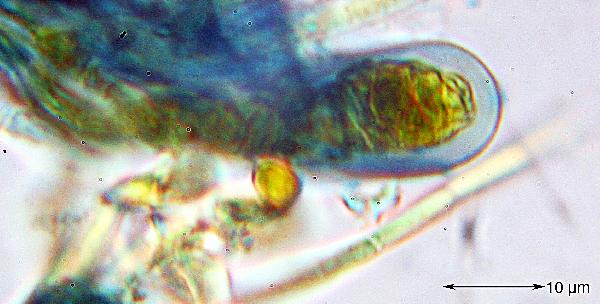

Felix Schumm - CC BY-SA 4.0
[12106], Spanien, Kanarische Inseln, La Palma: Cumbre Nueva,
Kammweg zwischen El Pilar und Reventón, Lorbeerwald beim Abstieg
zur Fuente de Guairin, epiphytisch, 1320 m. Leg. A. Schäfer-Verwimp
& Verwimp, 23. März 2005 (Nr. 24612), det. F. Schumm, 11.9.2005l -
Mark P+ orange (Pannarin); Sporen 1-zellig, zu 8, hyalin, mit warzigem
Epispor, ca. 16,4 x 8,7 μm.


Felix Schumm - CC BY-SA 4.0
[12106], Spanien, Kanarische Inseln, La Palma: Cumbre Nueva,
Kammweg zwischen El Pilar und Reventón, Lorbeerwald beim Abstieg
zur Fuente de Guairin, epiphytisch, 1320 m. Leg. A. Schäfer-Verwimp
& Verwimp, 23. März 2005 (Nr. 24612), det. F. Schumm, 11.9.2005l -
Mark P+ orange (Pannarin); Sporen 1-zellig, zu 8, hyalin, mit warzigem
Epispor, ca. 16,4 x 8,7 μm.
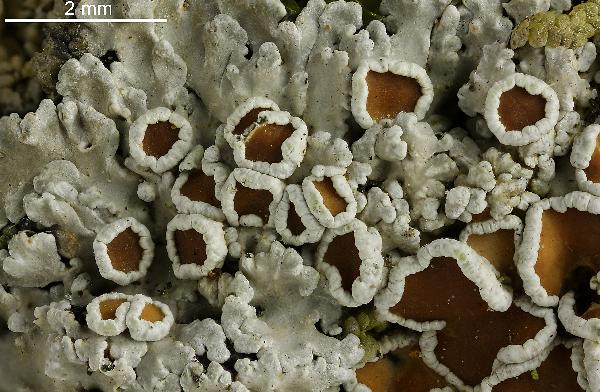

Felix Schumm - CC BY-SA 4.0
[15334], La Reunion, zwischen Bourg-Murat und Plaine des Sables,
Philippeastäucher; 21,19442° S, 55,63387°E, 2060 m. Leg. F. Schumm
& J.-P. Frahm 11.09.2009, det. P. M. Jørgensen, 2009 (Dubl. an P.M.
Jørgensen - mit Pannarin, daher nicht Pannaria squamulosa); - P+
orange, Asci ohne amyloide Strukturen.
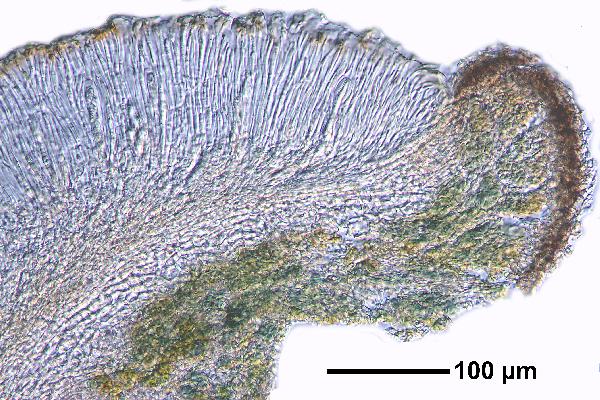

Felix Schumm - CC BY-SA 4.0
[15334], La Reunion, zwischen Bourg-Murat und Plaine des Sables,
Philippeastäucher; 21,19442° S, 55,63387°E, 2060 m. Leg. F. Schumm
& J.-P. Frahm 11.09.2009, det. P. M. Jørgensen, 2009 (Dubl. an P.M.
Jørgensen - mit Pannarin, daher nicht Pannaria squamulosa); - P+
orange, Asci ohne amyloide Strukturen.
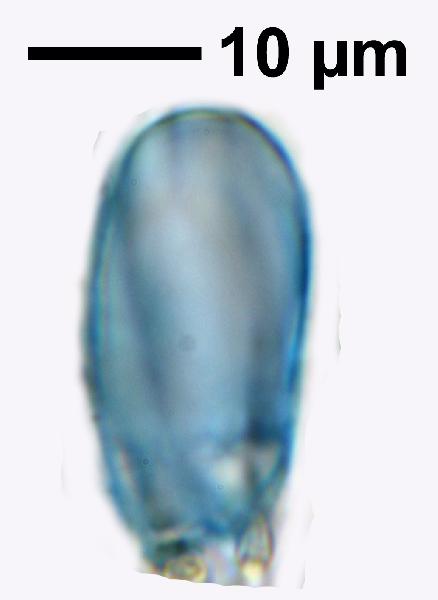

Felix Schumm - CC BY-SA 4.0
[15334], La Reunion, zwischen Bourg-Murat und Plaine des Sables,
Philippeastäucher; 21,19442° S, 55,63387°E, 2060 m. Leg. F. Schumm
& J.-P. Frahm 11.09.2009, det. P. M. Jørgensen, 2009 (Dubl. an P.M.
Jørgensen - mit Pannarin, daher nicht Pannaria squamulosa); - P+
orange, Asci ohne amyloide Strukturen.
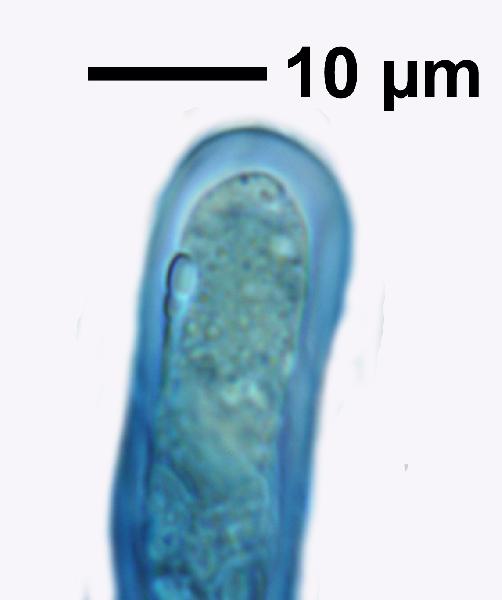

Felix Schumm - CC BY-SA 4.0
[15334], La Reunion, zwischen Bourg-Murat und Plaine des Sables,
Philippeastäucher; 21,19442° S, 55,63387°E, 2060 m. Leg. F. Schumm
& J.-P. Frahm 11.09.2009, det. P. M. Jørgensen, 2009 (Dubl. an P.M.
Jørgensen - mit Pannarin, daher nicht Pannaria squamulosa); - P+
orange, Asci ohne amyloide Strukturen.
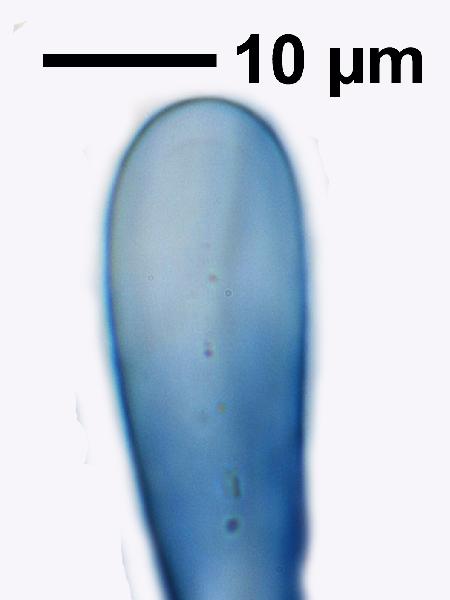

Felix Schumm - CC BY-SA 4.0
[15334], La Reunion, zwischen Bourg-Murat und Plaine des Sables,
Philippeastäucher; 21,19442° S, 55,63387°E, 2060 m. Leg. F. Schumm
& J.-P. Frahm 11.09.2009, det. P. M. Jørgensen, 2009 (Dubl. an P.M.
Jørgensen - mit Pannarin, daher nicht Pannaria squamulosa); - P+
orange, Asci ohne amyloide Strukturen.


Felix Schumm - CC BY-SA 4.0
[15334], La Reunion, zwischen Bourg-Murat und Plaine des Sables,
Philippeastäucher; 21,19442° S, 55,63387°E, 2060 m. Leg. F. Schumm
& J.-P. Frahm 11.09.2009, det. P. M. Jørgensen, 2009 (Dubl. an P.M.
Jørgensen - mit Pannarin, daher nicht Pannaria squamulosa); - P+
orange, Asci ohne amyloide Strukturen.
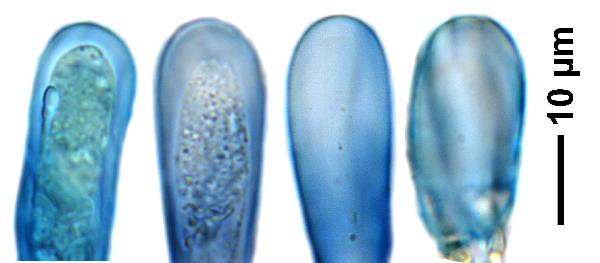

Felix Schumm - CC BY-SA 4.0
[15334], La Reunion, zwischen Bourg-Murat und Plaine des Sables,
Philippeastäucher; 21,19442° S, 55,63387°E, 2060 m. Leg. F. Schumm
& J.-P. Frahm 11.09.2009, det. P. M. Jørgensen, 2009 (Dubl. an P.M.
Jørgensen - mit Pannarin, daher nicht Pannaria squamulosa); - P+
orange, Asci ohne amyloide Strukturen.
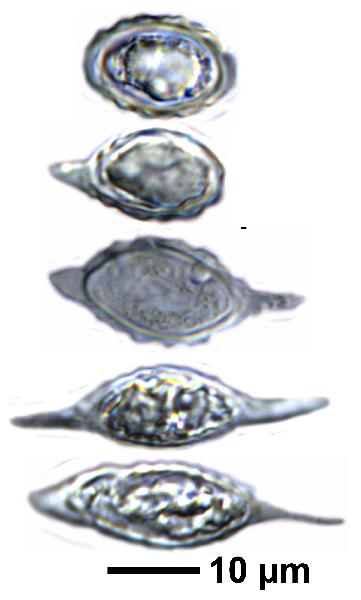

Felix Schumm - CC BY-SA 4.0
[15334], La Reunion, zwischen Bourg-Murat und Plaine des Sables,
Philippeastäucher; 21,19442° S, 55,63387°E, 2060 m. Leg. F. Schumm
& J.-P. Frahm 11.09.2009, det. P. M. Jørgensen, 2009 (Dubl. an P.M.
Jørgensen - mit Pannarin, daher nicht Pannaria squamulosa); - P+
orange, Asci ohne amyloide Strukturen.
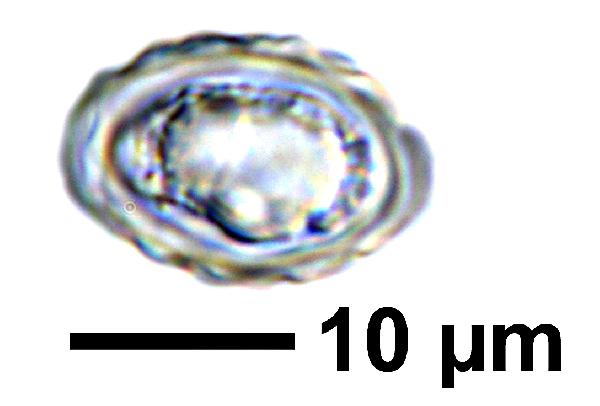

Felix Schumm - CC BY-SA 4.0
[15334], La Reunion, zwischen Bourg-Murat und Plaine des Sables,
Philippeastäucher; 21,19442° S, 55,63387°E, 2060 m. Leg. F. Schumm
& J.-P. Frahm 11.09.2009, det. P. M. Jørgensen, 2009 (Dubl. an P.M.
Jørgensen - mit Pannarin, daher nicht Pannaria squamulosa); - P+
orange, Asci ohne amyloide Strukturen.


Felix Schumm - CC BY-SA 4.0
[15334], La Reunion, zwischen Bourg-Murat und Plaine des Sables,
Philippeastäucher; 21,19442° S, 55,63387°E, 2060 m. Leg. F. Schumm
& J.-P. Frahm 11.09.2009, det. P. M. Jørgensen, 2009 (Dubl. an P.M.
Jørgensen - mit Pannarin, daher nicht Pannaria squamulosa); - P+
orange, Asci ohne amyloide Strukturen.
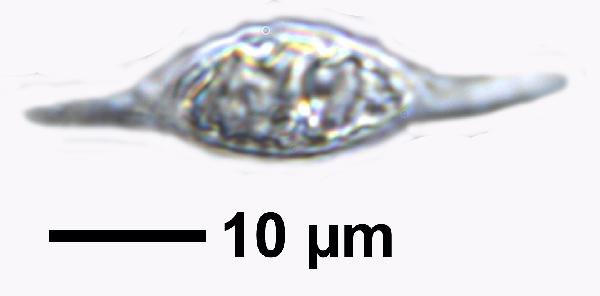

Felix Schumm - CC BY-SA 4.0
[15334], La Reunion, zwischen Bourg-Murat und Plaine des Sables,
Philippeastäucher; 21,19442° S, 55,63387°E, 2060 m. Leg. F. Schumm
& J.-P. Frahm 11.09.2009, det. P. M. Jørgensen, 2009 (Dubl. an P.M.
Jørgensen - mit Pannarin, daher nicht Pannaria squamulosa); - P+
orange, Asci ohne amyloide Strukturen.


Felix Schumm - CC BY-SA 4.0
[15334], La Reunion, zwischen Bourg-Murat und Plaine des Sables,
Philippeastäucher; 21,19442° S, 55,63387°E, 2060 m. Leg. F. Schumm
& J.-P. Frahm 11.09.2009, det. P. M. Jørgensen, 2009 (Dubl. an P.M.
Jørgensen - mit Pannarin, daher nicht Pannaria squamulosa); - P+
orange, Asci ohne amyloide Strukturen.
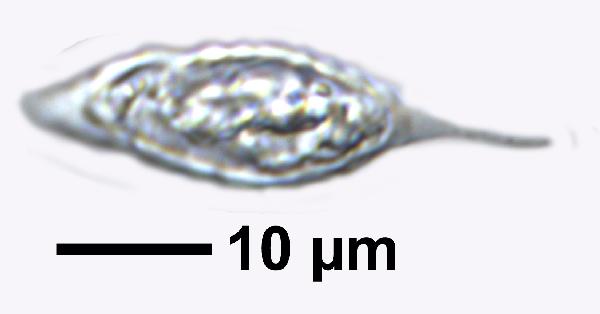

Felix Schumm - CC BY-SA 4.0
[15334], La Reunion, zwischen Bourg-Murat und Plaine des Sables,
Philippeastäucher; 21,19442° S, 55,63387°E, 2060 m. Leg. F. Schumm
& J.-P. Frahm 11.09.2009, det. P. M. Jørgensen, 2009 (Dubl. an P.M.
Jørgensen - mit Pannarin, daher nicht Pannaria squamulosa); - P+
orange, Asci ohne amyloide Strukturen.
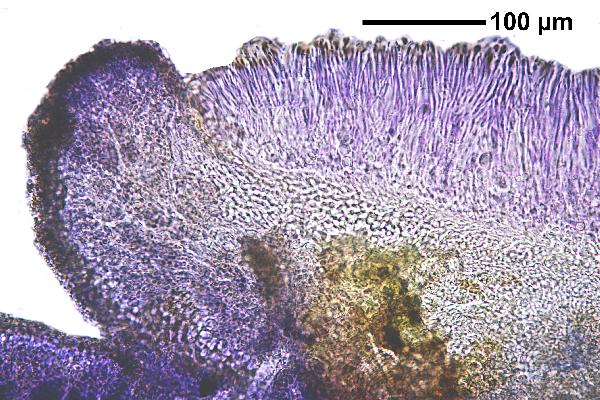

Felix Schumm - CC BY-SA 4.0
[15334], La Reunion, zwischen Bourg-Murat und Plaine des Sables,
Philippeastäucher; 21,19442° S, 55,63387°E, 2060 m. Leg. F. Schumm
& J.-P. Frahm 11.09.2009, det. P. M. Jørgensen, 2009 (Dubl. an P.M.
Jørgensen - mit Pannarin, daher nicht Pannaria squamulosa); - P+
orange, Asci ohne amyloide Strukturen.
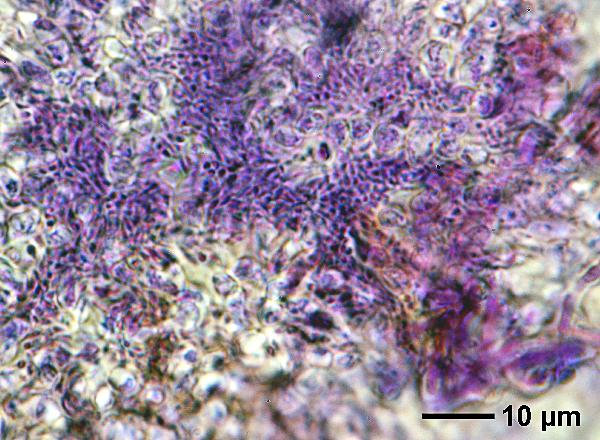

Felix Schumm - CC BY-SA 4.0
[15334], La Reunion, zwischen Bourg-Murat und Plaine des Sables,
Philippeastäucher; 21,19442° S, 55,63387°E, 2060 m. Leg. F. Schumm
& J.-P. Frahm 11.09.2009, det. P. M. Jørgensen, 2009 (Dubl. an P.M.
Jørgensen - mit Pannarin, daher nicht Pannaria squamulosa); - P+
orange, Asci ohne amyloide Strukturen.
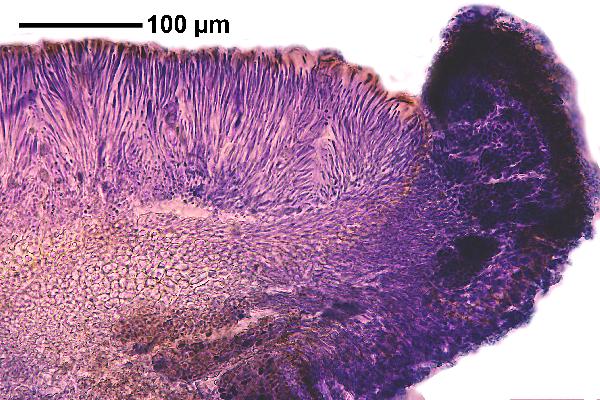

Felix Schumm - CC BY-SA 4.0
[15334], La Reunion, zwischen Bourg-Murat und Plaine des Sables,
Philippeastäucher; 21,19442° S, 55,63387°E, 2060 m. Leg. F. Schumm
& J.-P. Frahm 11.09.2009, det. P. M. Jørgensen, 2009 (Dubl. an P.M.
Jørgensen - mit Pannarin, daher nicht Pannaria squamulosa); - P+
orange, Asci ohne amyloide Strukturen.
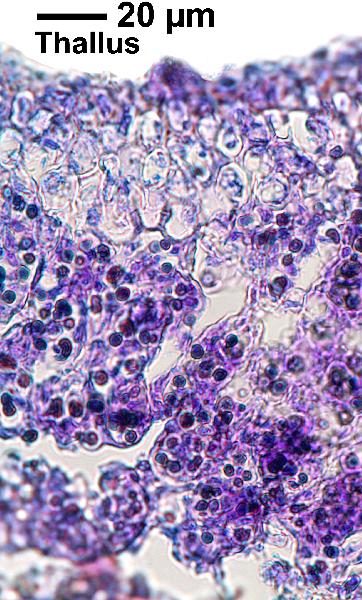

Felix Schumm - CC BY-SA 4.0
[15334], La Reunion, zwischen Bourg-Murat und Plaine des Sables,
Philippeastäucher; 21,19442° S, 55,63387°E, 2060 m. Leg. F. Schumm
& J.-P. Frahm 11.09.2009, det. P. M. Jørgensen, 2009 (Dubl. an P.M.
Jørgensen - mit Pannarin, daher nicht Pannaria squamulosa); - P+
orange, Asci ohne amyloide Strukturen.
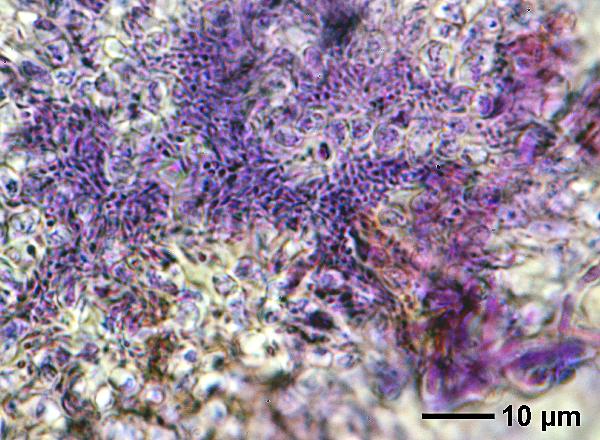

Felix Schumm - CC BY-SA 4.0
[15334], La Reunion, zwischen Bourg-Murat und Plaine des Sables,
Philippeastäucher; 21,19442° S, 55,63387°E, 2060 m. Leg. F. Schumm
& J.-P. Frahm 11.09.2009, det. P. M. Jørgensen, 2009 (Dubl. an P.M.
Jørgensen - mit Pannarin, daher nicht Pannaria squamulosa); - P+
orange, Asci ohne amyloide Strukturen.
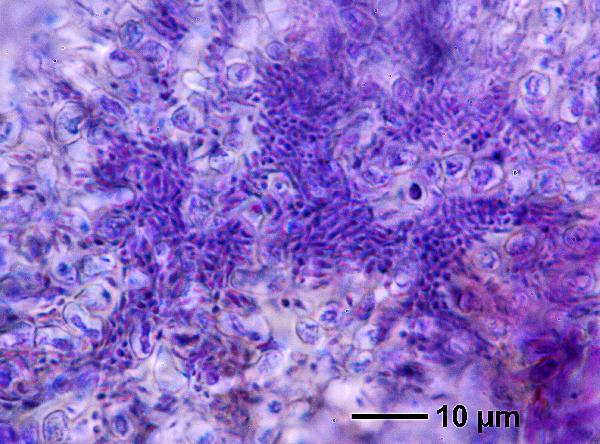

Felix Schumm - CC BY-SA 4.0
[15334], La Reunion, zwischen Bourg-Murat und Plaine des Sables,
Philippeastäucher; 21,19442° S, 55,63387°E, 2060 m. Leg. F. Schumm
& J.-P. Frahm 11.09.2009, det. P. M. Jørgensen, 2009 (Dubl. an P.M.
Jørgensen - mit Pannarin, daher nicht Pannaria squamulosa); - P+
orange, Asci ohne amyloide Strukturen.
Growth form: Foliose, narrow lobed
Substrata: bark
Photobiont: cyanobacteria, filamentous (e.g. Nostoc, Scytonema)
Reproductive strategy: mainly sexual
Restricted to humid-warm, oceanic areas
Commonnes-rarity: (info)
Alpine belt: absent
Subalpine belt: absent
Oromediterranean belt: absent
Montane belt: absent
Submediterranean belt: extremely rare
Padanian area: absent
Humid submediterranean belt: extremely rare
Humid mediterranean belt: extremely rare
Dry mediterranean belt: absent

Predictive model
| Herbarium samples |

Ulrich Kirschbaum CC BY-SA 4.0 - Source: https://www.thm.de/lse/ulrich-kirschbaum/flechtenbilder
Portugal: Madeira.


Felix Schumm – CC BY-SA 4.0
Image from: F. Schumm (2008) - Flechten Madeiras, der Kanaren und Azoren. Beck, OHG - ISBN: 978-3-00-023700-3

Courtesy Danièle et Olivier Gonnet - Source: https://www.afl-lichenologie.fr/Photos_AFL/Photos_AFL_P/Text_P/Pannaria_rubiginosa.htm
France, Gorges de la Rhue - Cantal
23/09/2015

Courtesy Danièle et Olivier Gonnet - Source: https://www.afl-lichenologie.fr/Photos_AFL/Photos_AFL_P/Text_P/Pannaria_rubiginosa.htm
France, Gorges de la Rhue - Cantal
23/09/2015

Courtesy Danièle et Olivier Gonnet - Source: https://www.afl-lichenologie.fr/Photos_AFL/Photos_AFL_P/Text_P/Pannaria_rubiginosa.htm
France, Gorges de la Rhue - Cantal
23/09/2015

Alain Gerault - Source: http://www.lichensmaritimes.org/index.php?task=fiche&lichen=309&lang=en
France, Lesteven

Alain Gerault - Source: http://www.lichensmaritimes.org/index.php?task=fiche&lichen=309&lang=en
France, Lesteven

Alain Gerault - Source: http://www.lichensmaritimes.org/index.php?task=fiche&lichen=309&lang=en
France, Lesteven

Michel David - Source: http://www.lichensmaritimes.org/index.php?task=fiche&lichen=309&lang=en
France, Lesteven

Michel David - Source: http://www.lichensmaritimes.org/index.php?task=fiche&lichen=309&lang=en
France, Lesteven

Michel David - Source: http://www.lichensmaritimes.org/index.php?task=fiche&lichen=309&lang=en
France, Crozon

Michel David - Source: http://www.lichensmaritimes.org/index.php?task=fiche&lichen=309&lang=en
France, Lesteven

Michel David - Source: http://www.lichensmaritimes.org/index.php?task=fiche&lichen=309&lang=en
France, Lesteven

Michel David - Source: http://www.lichensmaritimes.org/index.php?task=fiche&lichen=309&lang=en
France, Crozon

Michel David - Source: http://www.lichensmaritimes.org/index.php?task=fiche&lichen=309&lang=en
France, Crozon

Michel David - Source: http://www.lichensmaritimes.org/index.php?task=fiche&lichen=309&lang=en
France, Crozon

Michel David - Source: http://www.lichensmaritimes.org/index.php?task=fiche&lichen=309&lang=en
France, Crozon

Michel David - Source: http://www.lichensmaritimes.org/index.php?task=fiche&lichen=309&lang=en
France, Crozon

Michel David - Source: http://www.lichensmaritimes.org/index.php?task=fiche&lichen=309&lang=en
France, Crozon

Michel David - Source: http://www.lichensmaritimes.org/index.php?task=fiche&lichen=309&lang=en
France, Crozon

Michel David - Source: http://www.lichensmaritimes.org/index.php?task=fiche&lichen=309&lang=en
France, Crozon

Michel David - Source: http://www.lichensmaritimes.org/index.php?task=fiche&lichen=309&lang=en
France, Crozon

Michel David - Source: http://www.lichensmaritimes.org/index.php?task=fiche&lichen=309&lang=en
France, Lesteven

Michel David - Source: http://www.lichensmaritimes.org/index.php?task=fiche&lichen=309&lang=en
France, Lesteven

Michel David - Source: http://www.lichensmaritimes.org/index.php?task=fiche&lichen=309&lang=en
France, Lesteven


P.L. Nimis; Owner: Department of Life Sciences, University of Trieste
Herbarium: TSB (17118)
2001/11/28

Jacques Haine - Source: http://www.lichensmaritimes.org/index.php?task=fiche&lichen=309&lang=en
France, Crozon

Jacques Haine - Source: http://www.lichensmaritimes.org/index.php?task=fiche&lichen=309&lang=en
France, Crozon

Jacques Haine - Source: http://www.lichensmaritimes.org/index.php?task=fiche&lichen=309&lang=en
France, Crozon


Felix Schumm - CC BY-SA 4.0
[2464], Spanien, Kanarische Inseln, Teneriffa, Lorbeer-Erika-Wald bei Las Mercedes, ca. 950 m. Leg. F. Schumm, 03.01.1976, det. F. Schumm, 2007. - Sporen 1-zellig, mit welligem Epispor, 15,3 x 8,2 μm (mit Epispor: 17,9 x 12 μm); Hymenium J+ dauerhaft blau, Asci ohne besondere Apicalstruktur; Th. P+ orangerot.


Felix Schumm - CC BY-SA 4.0
[2464], Spanien, Kanarische Inseln, Teneriffa, Lorbeer-Erika-Wald bei Las Mercedes, ca. 950 m. Leg. F. Schumm, 03.01.1976, det. F. Schumm, 2007. - Sporen 1-zellig, mit welligem Epispor, 15,3 x 8,2 μm (mit Epispor: 17,9 x 12 μm); Hymenium J+ dauerhaft blau, Asci ohne besondere Apicalstruktur; Th. P+ orangerot.


Felix Schumm - CC BY-SA 4.0
[2464], Spanien, Kanarische Inseln, Teneriffa, Lorbeer-Erika-Wald bei Las Mercedes, ca. 950 m. Leg. F. Schumm, 03.01.1976, det. F. Schumm, 2007. - Sporen 1-zellig, mit welligem Epispor, 15,3 x 8,2 μm (mit Epispor: 17,9 x 12 μm); Hymenium J+ dauerhaft blau, Asci ohne besondere Apicalstruktur; Th. P+ orangerot.


Felix Schumm - CC BY-SA 4.0
[2464], Spanien, Kanarische Inseln, Teneriffa, Lorbeer-Erika-Wald bei Las Mercedes, ca. 950 m. Leg. F. Schumm, 03.01.1976, det. F. Schumm, 2007. - Sporen 1-zellig, mit welligem Epispor, 15,3 x 8,2 μm (mit Epispor: 17,9 x 12 μm); Hymenium J+ dauerhaft blau, Asci ohne besondere Apicalstruktur; Th. P+ orangerot.


Felix Schumm - CC BY-SA 4.0
[2464], Spanien, Kanarische Inseln, Teneriffa, Lorbeer-Erika-Wald bei Las Mercedes, ca. 950 m. Leg. F. Schumm, 03.01.1976, det. F. Schumm, 2007. - Sporen 1-zellig, mit welligem Epispor, 15,3 x 8,2 μm (mit Epispor: 17,9 x 12 μm); Hymenium J+ dauerhaft blau, Asci ohne besondere Apicalstruktur; Th. P+ orangerot.


Felix Schumm - CC BY-SA 4.0
[2464], Spanien, Kanarische Inseln, Teneriffa, Lorbeer-Erika-Wald bei Las Mercedes, ca. 950 m. Leg. F. Schumm, 03.01.1976, det. F. Schumm, 2007. - Sporen 1-zellig, mit welligem Epispor, 15,3 x 8,2 μm (mit Epispor: 17,9 x 12 μm); Hymenium J+ dauerhaft blau, Asci ohne besondere Apicalstruktur; Th. P+ orangerot.


Felix Schumm - CC BY-SA 4.0
[2464], Spanien, Kanarische Inseln, Teneriffa, Lorbeer-Erika-Wald bei Las Mercedes, ca. 950 m. Leg. F. Schumm, 03.01.1976, det. F. Schumm, 2007. - Sporen 1-zellig, mit welligem Epispor, 15,3 x 8,2 μm (mit Epispor: 17,9 x 12 μm); Hymenium J+ dauerhaft blau, Asci ohne besondere Apicalstruktur; Th. P+ orangerot.


Felix Schumm - CC BY-SA 4.0
[2464], Spanien, Kanarische Inseln, Teneriffa, Lorbeer-Erika-Wald bei Las Mercedes, ca. 950 m. Leg. F. Schumm, 03.01.1976, det. F. Schumm, 2007. - Sporen 1-zellig, mit welligem Epispor, 15,3 x 8,2 μm (mit Epispor: 17,9 x 12 μm); Hymenium J+ dauerhaft blau, Asci ohne besondere Apicalstruktur; Th. P+ orangerot.


Felix Schumm - CC BY-SA 4.0
[2464], Spanien, Kanarische Inseln, Teneriffa, Lorbeer-Erika-Wald bei Las Mercedes, ca. 950 m. Leg. F. Schumm, 03.01.1976, det. F. Schumm, 2007. - Sporen 1-zellig, mit welligem Epispor, 15,3 x 8,2 μm (mit Epispor: 17,9 x 12 μm); Hymenium J+ dauerhaft blau, Asci ohne besondere Apicalstruktur; Th. P+ orangerot.


Felix Schumm - CC BY-SA 4.0
[2464], Spanien, Kanarische Inseln, Teneriffa, Lorbeer-Erika-Wald bei Las Mercedes, ca. 950 m. Leg. F. Schumm, 03.01.1976, det. F. Schumm, 2007. - Sporen 1-zellig, mit welligem Epispor, 15,3 x 8,2 μm (mit Epispor: 17,9 x 12 μm); Hymenium J+ dauerhaft blau, Asci ohne besondere Apicalstruktur; Th. P+ orangerot.


Felix Schumm - CC BY-SA 4.0
[2464], Spanien, Kanarische Inseln, Teneriffa, Lorbeer-Erika-Wald bei Las Mercedes, ca. 950 m. Leg. F. Schumm, 03.01.1976, det. F. Schumm, 2007. - Sporen 1-zellig, mit welligem Epispor, 15,3 x 8,2 μm (mit Epispor: 17,9 x 12 μm); Hymenium J+ dauerhaft blau, Asci ohne besondere Apicalstruktur; Th. P+ orangerot.


Felix Schumm - CC BY-SA 4.0
[2464], Spanien, Kanarische Inseln, Teneriffa, Lorbeer-Erika-Wald bei Las Mercedes, ca. 950 m. Leg. F. Schumm, 03.01.1976, det. F. Schumm, 2007. - Sporen 1-zellig, mit welligem Epispor, 15,3 x 8,2 μm (mit Epispor: 17,9 x 12 μm); Hymenium J+ dauerhaft blau, Asci ohne besondere Apicalstruktur; Th. P+ orangerot.


Felix Schumm - CC BY-SA 4.0
[2464], Spanien, Kanarische Inseln, Teneriffa, Lorbeer-Erika-Wald bei Las Mercedes, ca. 950 m. Leg. F. Schumm, 03.01.1976, det. F. Schumm, 2007. - Sporen 1-zellig, mit welligem Epispor, 15,3 x 8,2 μm (mit Epispor: 17,9 x 12 μm); Hymenium J+ dauerhaft blau, Asci ohne besondere Apicalstruktur; Th. P+ orangerot.


Felix Schumm - CC BY-SA 4.0
[2464], Spanien, Kanarische Inseln, Teneriffa, Lorbeer-Erika-Wald bei Las Mercedes, ca. 950 m. Leg. F. Schumm, 03.01.1976, det. F. Schumm, 2007. - Sporen 1-zellig, mit welligem Epispor, 15,3 x 8,2 μm (mit Epispor: 17,9 x 12 μm); Hymenium J+ dauerhaft blau, Asci ohne besondere Apicalstruktur; Th. P+ orangerot.


Felix Schumm - CC BY-SA 4.0
[12106], Spanien, Kanarische Inseln, La Palma: Cumbre Nueva, Kammweg zwischen El Pilar und Reventón, Lorbeerwald beim Abstieg zur Fuente de Guairin, epiphytisch, 1320 m. Leg. A. Schäfer-Verwimp & Verwimp, 23. März 2005 (Nr. 24612), det. F. Schumm, 11.9.2005l - Mark P+ orange (Pannarin); Sporen 1-zellig, zu 8, hyalin, mit warzigem Epispor, ca. 16,4 x 8,7 μm.


Felix Schumm - CC BY-SA 4.0
[12106], Spanien, Kanarische Inseln, La Palma: Cumbre Nueva, Kammweg zwischen El Pilar und Reventón, Lorbeerwald beim Abstieg zur Fuente de Guairin, epiphytisch, 1320 m. Leg. A. Schäfer-Verwimp & Verwimp, 23. März 2005 (Nr. 24612), det. F. Schumm, 11.9.2005l - Mark P+ orange (Pannarin); Sporen 1-zellig, zu 8, hyalin, mit warzigem Epispor, ca. 16,4 x 8,7 μm.


Felix Schumm - CC BY-SA 4.0
[12106], Spanien, Kanarische Inseln, La Palma: Cumbre Nueva, Kammweg zwischen El Pilar und Reventón, Lorbeerwald beim Abstieg zur Fuente de Guairin, epiphytisch, 1320 m. Leg. A. Schäfer-Verwimp & Verwimp, 23. März 2005 (Nr. 24612), det. F. Schumm, 11.9.2005l - Mark P+ orange (Pannarin); Sporen 1-zellig, zu 8, hyalin, mit warzigem Epispor, ca. 16,4 x 8,7 μm.


Felix Schumm - CC BY-SA 4.0
[12106], Spanien, Kanarische Inseln, La Palma: Cumbre Nueva, Kammweg zwischen El Pilar und Reventón, Lorbeerwald beim Abstieg zur Fuente de Guairin, epiphytisch, 1320 m. Leg. A. Schäfer-Verwimp & Verwimp, 23. März 2005 (Nr. 24612), det. F. Schumm, 11.9.2005l - Mark P+ orange (Pannarin); Sporen 1-zellig, zu 8, hyalin, mit warzigem Epispor, ca. 16,4 x 8,7 μm.


Felix Schumm - CC BY-SA 4.0
[12106], Spanien, Kanarische Inseln, La Palma: Cumbre Nueva, Kammweg zwischen El Pilar und Reventón, Lorbeerwald beim Abstieg zur Fuente de Guairin, epiphytisch, 1320 m. Leg. A. Schäfer-Verwimp & Verwimp, 23. März 2005 (Nr. 24612), det. F. Schumm, 11.9.2005l - Mark P+ orange (Pannarin); Sporen 1-zellig, zu 8, hyalin, mit warzigem Epispor, ca. 16,4 x 8,7 μm.


Felix Schumm - CC BY-SA 4.0
[12106], Spanien, Kanarische Inseln, La Palma: Cumbre Nueva, Kammweg zwischen El Pilar und Reventón, Lorbeerwald beim Abstieg zur Fuente de Guairin, epiphytisch, 1320 m. Leg. A. Schäfer-Verwimp & Verwimp, 23. März 2005 (Nr. 24612), det. F. Schumm, 11.9.2005l - Mark P+ orange (Pannarin); Sporen 1-zellig, zu 8, hyalin, mit warzigem Epispor, ca. 16,4 x 8,7 μm.


Felix Schumm - CC BY-SA 4.0
[12106], Spanien, Kanarische Inseln, La Palma: Cumbre Nueva, Kammweg zwischen El Pilar und Reventón, Lorbeerwald beim Abstieg zur Fuente de Guairin, epiphytisch, 1320 m. Leg. A. Schäfer-Verwimp & Verwimp, 23. März 2005 (Nr. 24612), det. F. Schumm, 11.9.2005l - Mark P+ orange (Pannarin); Sporen 1-zellig, zu 8, hyalin, mit warzigem Epispor, ca. 16,4 x 8,7 μm.


Felix Schumm - CC BY-SA 4.0
[12106], Spanien, Kanarische Inseln, La Palma: Cumbre Nueva, Kammweg zwischen El Pilar und Reventón, Lorbeerwald beim Abstieg zur Fuente de Guairin, epiphytisch, 1320 m. Leg. A. Schäfer-Verwimp & Verwimp, 23. März 2005 (Nr. 24612), det. F. Schumm, 11.9.2005l - Mark P+ orange (Pannarin); Sporen 1-zellig, zu 8, hyalin, mit warzigem Epispor, ca. 16,4 x 8,7 μm.


Felix Schumm - CC BY-SA 4.0
[15334], La Reunion, zwischen Bourg-Murat und Plaine des Sables, Philippeastäucher; 21,19442° S, 55,63387°E, 2060 m. Leg. F. Schumm & J.-P. Frahm 11.09.2009, det. P. M. Jørgensen, 2009 (Dubl. an P.M. Jørgensen - mit Pannarin, daher nicht Pannaria squamulosa); - P+ orange, Asci ohne amyloide Strukturen.


Felix Schumm - CC BY-SA 4.0
[15334], La Reunion, zwischen Bourg-Murat und Plaine des Sables, Philippeastäucher; 21,19442° S, 55,63387°E, 2060 m. Leg. F. Schumm & J.-P. Frahm 11.09.2009, det. P. M. Jørgensen, 2009 (Dubl. an P.M. Jørgensen - mit Pannarin, daher nicht Pannaria squamulosa); - P+ orange, Asci ohne amyloide Strukturen.


Felix Schumm - CC BY-SA 4.0
[15334], La Reunion, zwischen Bourg-Murat und Plaine des Sables, Philippeastäucher; 21,19442° S, 55,63387°E, 2060 m. Leg. F. Schumm & J.-P. Frahm 11.09.2009, det. P. M. Jørgensen, 2009 (Dubl. an P.M. Jørgensen - mit Pannarin, daher nicht Pannaria squamulosa); - P+ orange, Asci ohne amyloide Strukturen.


Felix Schumm - CC BY-SA 4.0
[15334], La Reunion, zwischen Bourg-Murat und Plaine des Sables, Philippeastäucher; 21,19442° S, 55,63387°E, 2060 m. Leg. F. Schumm & J.-P. Frahm 11.09.2009, det. P. M. Jørgensen, 2009 (Dubl. an P.M. Jørgensen - mit Pannarin, daher nicht Pannaria squamulosa); - P+ orange, Asci ohne amyloide Strukturen.


Felix Schumm - CC BY-SA 4.0
[15334], La Reunion, zwischen Bourg-Murat und Plaine des Sables, Philippeastäucher; 21,19442° S, 55,63387°E, 2060 m. Leg. F. Schumm & J.-P. Frahm 11.09.2009, det. P. M. Jørgensen, 2009 (Dubl. an P.M. Jørgensen - mit Pannarin, daher nicht Pannaria squamulosa); - P+ orange, Asci ohne amyloide Strukturen.


Felix Schumm - CC BY-SA 4.0
[15334], La Reunion, zwischen Bourg-Murat und Plaine des Sables, Philippeastäucher; 21,19442° S, 55,63387°E, 2060 m. Leg. F. Schumm & J.-P. Frahm 11.09.2009, det. P. M. Jørgensen, 2009 (Dubl. an P.M. Jørgensen - mit Pannarin, daher nicht Pannaria squamulosa); - P+ orange, Asci ohne amyloide Strukturen.


Felix Schumm - CC BY-SA 4.0
[15334], La Reunion, zwischen Bourg-Murat und Plaine des Sables, Philippeastäucher; 21,19442° S, 55,63387°E, 2060 m. Leg. F. Schumm & J.-P. Frahm 11.09.2009, det. P. M. Jørgensen, 2009 (Dubl. an P.M. Jørgensen - mit Pannarin, daher nicht Pannaria squamulosa); - P+ orange, Asci ohne amyloide Strukturen.


Felix Schumm - CC BY-SA 4.0
[15334], La Reunion, zwischen Bourg-Murat und Plaine des Sables, Philippeastäucher; 21,19442° S, 55,63387°E, 2060 m. Leg. F. Schumm & J.-P. Frahm 11.09.2009, det. P. M. Jørgensen, 2009 (Dubl. an P.M. Jørgensen - mit Pannarin, daher nicht Pannaria squamulosa); - P+ orange, Asci ohne amyloide Strukturen.


Felix Schumm - CC BY-SA 4.0
[15334], La Reunion, zwischen Bourg-Murat und Plaine des Sables, Philippeastäucher; 21,19442° S, 55,63387°E, 2060 m. Leg. F. Schumm & J.-P. Frahm 11.09.2009, det. P. M. Jørgensen, 2009 (Dubl. an P.M. Jørgensen - mit Pannarin, daher nicht Pannaria squamulosa); - P+ orange, Asci ohne amyloide Strukturen.


Felix Schumm - CC BY-SA 4.0
[15334], La Reunion, zwischen Bourg-Murat und Plaine des Sables, Philippeastäucher; 21,19442° S, 55,63387°E, 2060 m. Leg. F. Schumm & J.-P. Frahm 11.09.2009, det. P. M. Jørgensen, 2009 (Dubl. an P.M. Jørgensen - mit Pannarin, daher nicht Pannaria squamulosa); - P+ orange, Asci ohne amyloide Strukturen.


Felix Schumm - CC BY-SA 4.0
[15334], La Reunion, zwischen Bourg-Murat und Plaine des Sables, Philippeastäucher; 21,19442° S, 55,63387°E, 2060 m. Leg. F. Schumm & J.-P. Frahm 11.09.2009, det. P. M. Jørgensen, 2009 (Dubl. an P.M. Jørgensen - mit Pannarin, daher nicht Pannaria squamulosa); - P+ orange, Asci ohne amyloide Strukturen.


Felix Schumm - CC BY-SA 4.0
[15334], La Reunion, zwischen Bourg-Murat und Plaine des Sables, Philippeastäucher; 21,19442° S, 55,63387°E, 2060 m. Leg. F. Schumm & J.-P. Frahm 11.09.2009, det. P. M. Jørgensen, 2009 (Dubl. an P.M. Jørgensen - mit Pannarin, daher nicht Pannaria squamulosa); - P+ orange, Asci ohne amyloide Strukturen.


Felix Schumm - CC BY-SA 4.0
[15334], La Reunion, zwischen Bourg-Murat und Plaine des Sables, Philippeastäucher; 21,19442° S, 55,63387°E, 2060 m. Leg. F. Schumm & J.-P. Frahm 11.09.2009, det. P. M. Jørgensen, 2009 (Dubl. an P.M. Jørgensen - mit Pannarin, daher nicht Pannaria squamulosa); - P+ orange, Asci ohne amyloide Strukturen.


Felix Schumm - CC BY-SA 4.0
[15334], La Reunion, zwischen Bourg-Murat und Plaine des Sables, Philippeastäucher; 21,19442° S, 55,63387°E, 2060 m. Leg. F. Schumm & J.-P. Frahm 11.09.2009, det. P. M. Jørgensen, 2009 (Dubl. an P.M. Jørgensen - mit Pannarin, daher nicht Pannaria squamulosa); - P+ orange, Asci ohne amyloide Strukturen.


Felix Schumm - CC BY-SA 4.0
[15334], La Reunion, zwischen Bourg-Murat und Plaine des Sables, Philippeastäucher; 21,19442° S, 55,63387°E, 2060 m. Leg. F. Schumm & J.-P. Frahm 11.09.2009, det. P. M. Jørgensen, 2009 (Dubl. an P.M. Jørgensen - mit Pannarin, daher nicht Pannaria squamulosa); - P+ orange, Asci ohne amyloide Strukturen.


Felix Schumm - CC BY-SA 4.0
[15334], La Reunion, zwischen Bourg-Murat und Plaine des Sables, Philippeastäucher; 21,19442° S, 55,63387°E, 2060 m. Leg. F. Schumm & J.-P. Frahm 11.09.2009, det. P. M. Jørgensen, 2009 (Dubl. an P.M. Jørgensen - mit Pannarin, daher nicht Pannaria squamulosa); - P+ orange, Asci ohne amyloide Strukturen.


Felix Schumm - CC BY-SA 4.0
[15334], La Reunion, zwischen Bourg-Murat und Plaine des Sables, Philippeastäucher; 21,19442° S, 55,63387°E, 2060 m. Leg. F. Schumm & J.-P. Frahm 11.09.2009, det. P. M. Jørgensen, 2009 (Dubl. an P.M. Jørgensen - mit Pannarin, daher nicht Pannaria squamulosa); - P+ orange, Asci ohne amyloide Strukturen.


Felix Schumm - CC BY-SA 4.0
[15334], La Reunion, zwischen Bourg-Murat und Plaine des Sables, Philippeastäucher; 21,19442° S, 55,63387°E, 2060 m. Leg. F. Schumm & J.-P. Frahm 11.09.2009, det. P. M. Jørgensen, 2009 (Dubl. an P.M. Jørgensen - mit Pannarin, daher nicht Pannaria squamulosa); - P+ orange, Asci ohne amyloide Strukturen.


 DOLICHENS
DOLICHENS
